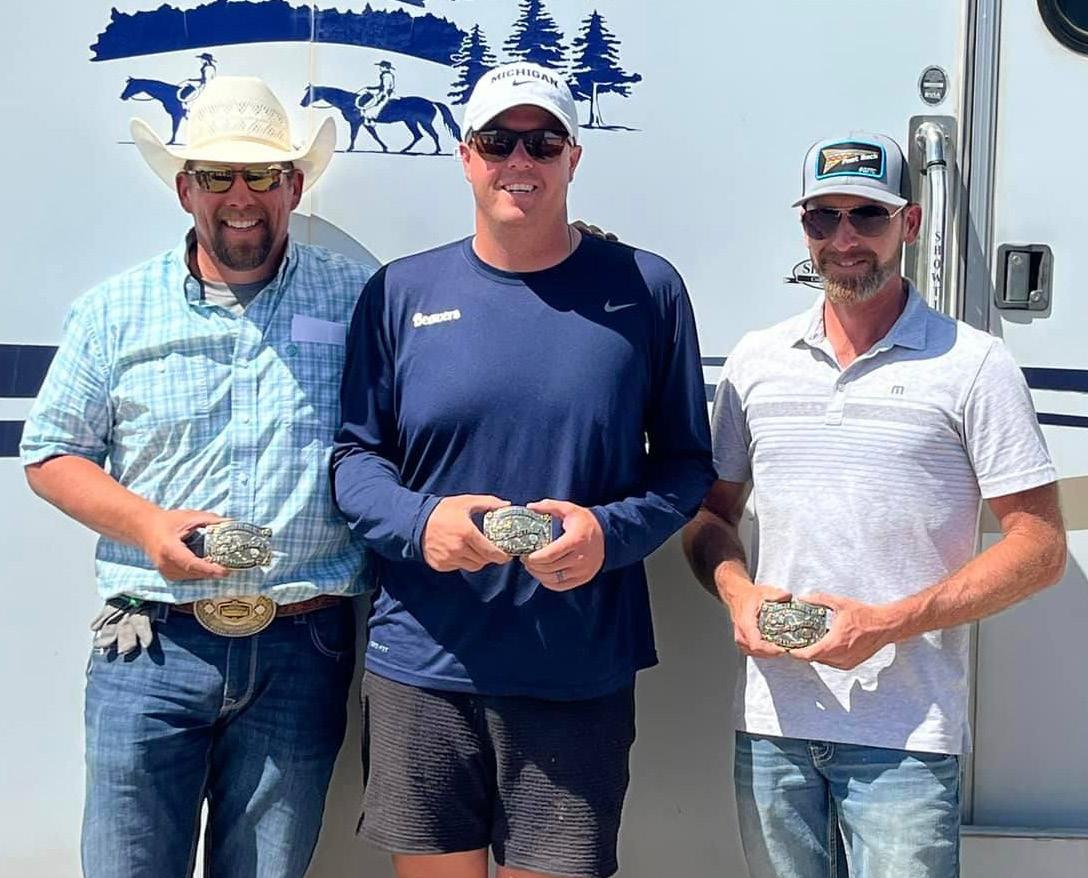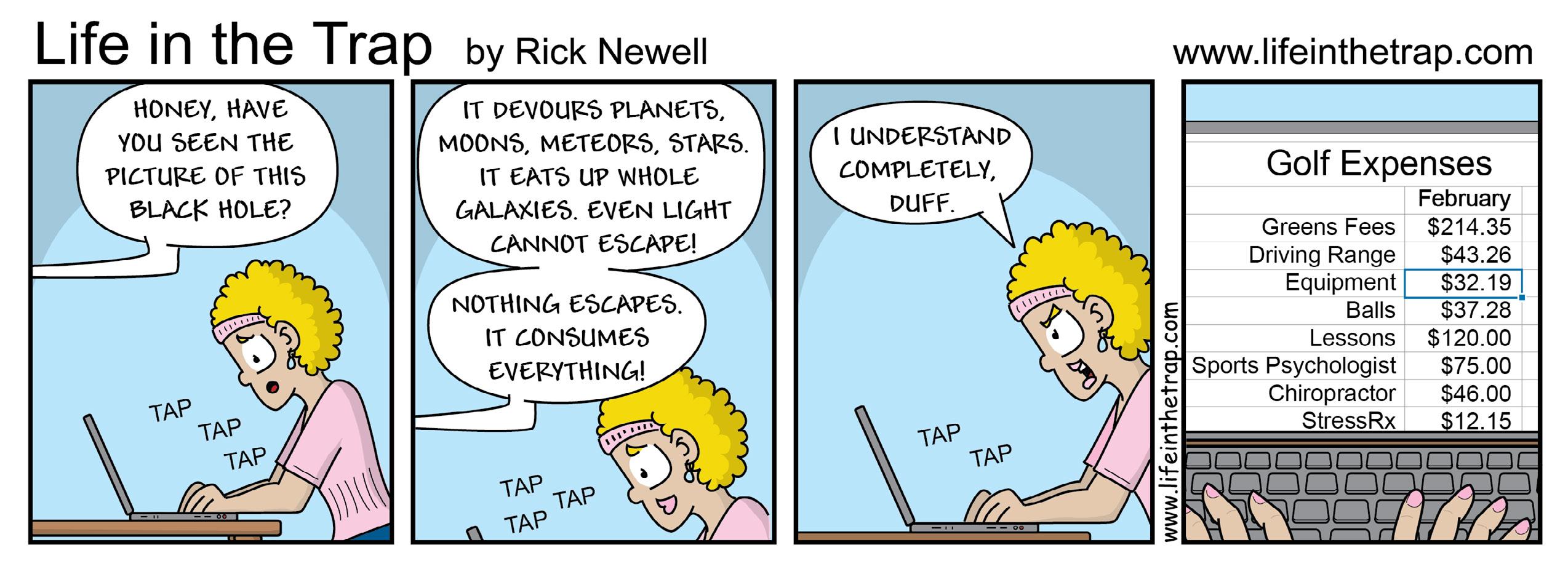




Sometimes you just need to take what the news gives you. I am rewriting my letter this issue after having my phone permanently vibrating for a while Thursday Night as those who were tuning into the first presidential debate were offered a free advertisement for golf handicaps and the circus that can come with the topic.
At the risk of bringing in politics, this is certainly not about political leanings, but the banter between two amateurs about their respective prowess (or lacktherof?) on the links carried a surprising amount of airtime.
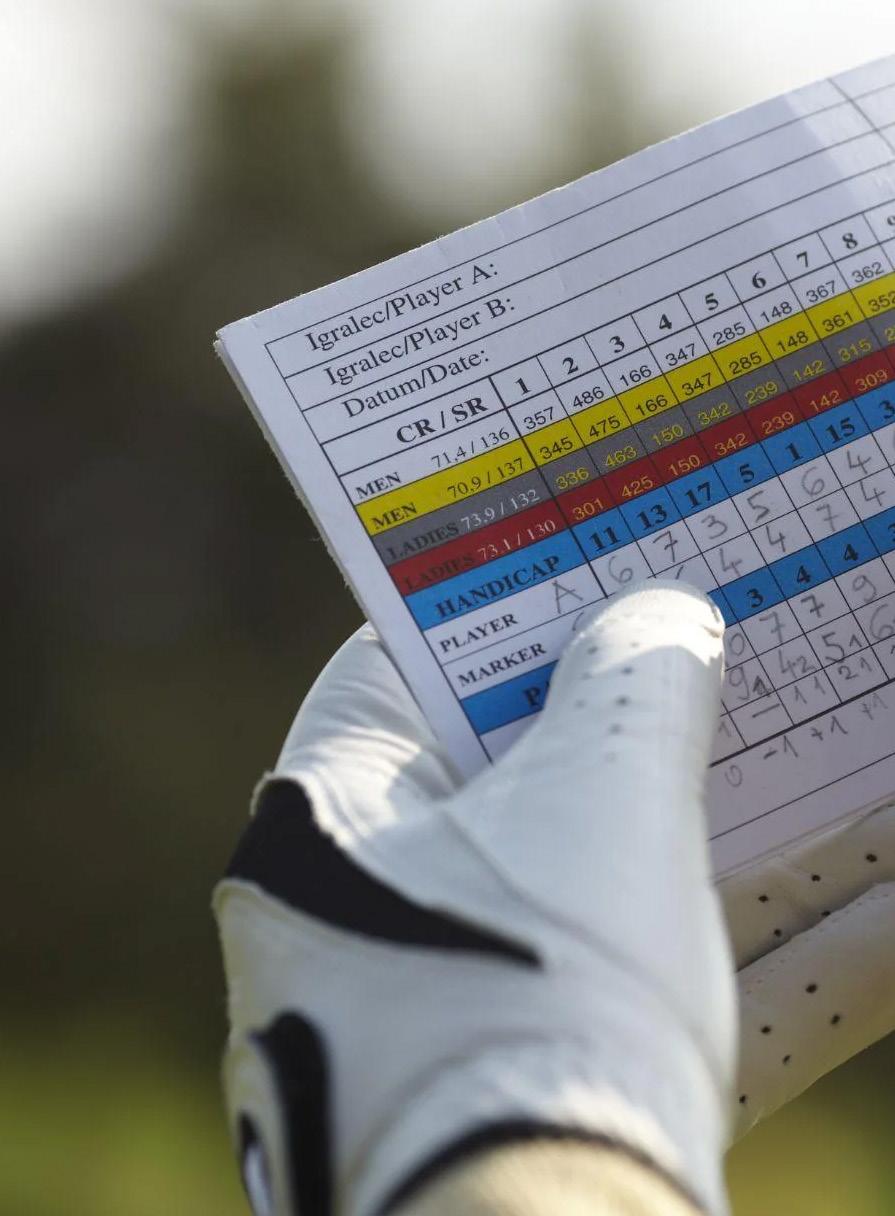
Given the MSGA’s Tournament Schedule, the small, but mighty staff are not afforded a lot of gaps in the season to play in events, but I like to take the chances to play even when my game might not be suited to tournament golf. The events I’ve had the ability to play in have had a net component where handicaps are utilized for at least some of the competition.
Recently, at a charity event, my playing partners were engaged in a lengthy discussion about handicaps and any number of anecdotes related to their frustrations, ideas, and questions. Of course, this was an educational
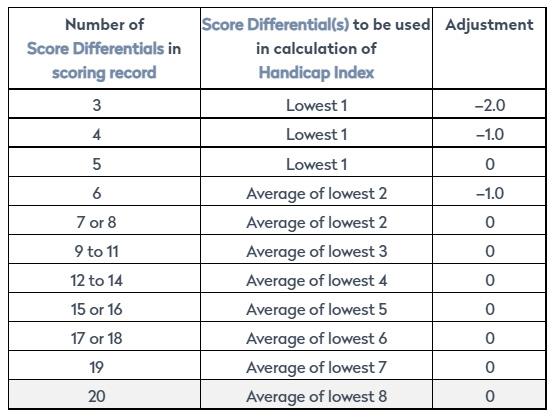
The R&A created this table to show how a Handicap Index is calculated. Someone please pass me an abacus when you get a moment.
opportunity for me – not only to provide some background, but also to listen.
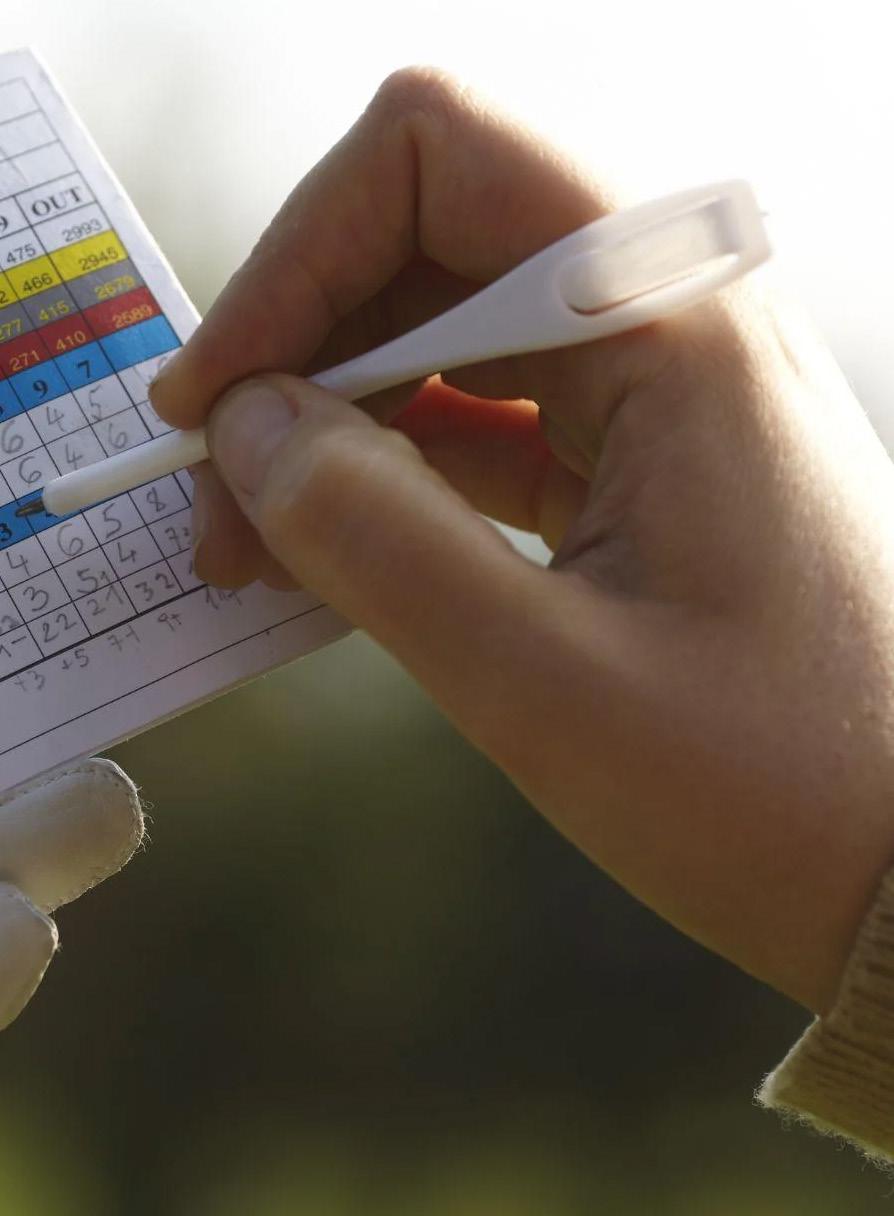

A quick distillation of the conversation and hundreds of other ones going on simultaneously at a golf course near you goes something like this:
Player A: “Handicaps in this tournament are a joke. I know John Doe is a at least a 12 and his handicap is an 18!”
Player B: “I played last week and my partner, Jane Doe had an 8 handicap and she shot 85, there’s no way she’s an 8!”
Player C: “I don’t have a handicap, so they just gave me the max.”
Player D: “I don’t think max is enough for Player C.”
**Insert Laugh Track**
We could and maybe will have an entire issue on topics related to handicaps. Ultimately, the word stems from gambling – you mostly hear it reference in modern times related to horse racing.
When there is pride on the line, you can bet that a full effort will be given on the golf course. When there is money on the line, you can literally bet that there will be chirping not only from birds, but about net birdies and the merits of proper handicap allocation in a given match, tournament, or game.
My number one point of emphasis on handicaps are that they are a measurement of your potential – a representation of what you are capable of, NOT your average score.
Playing to your handicap is not what an average day’s expectation should be. This creates a lot of long faces and slumped shoulders. You didn’t play bad if you shot near your handi-
BOARD OF DIRECTORS - OFFICERS
PRESIDENT................................. Mary Bryson
VICE PRESIDENT....................... Peter Benson
TREASURER..................................... Bill Dunn
PAST PRESIDENT........................... Carla Berg
WOMEN’S CHAIR...................... Teresa Brown
BOARD OF DIRECTORS
Russ Cravens, Bill Dunn, Ron Ramsbacher, Brett Bennyhoff, Teresa Brown, Rod Stirling, Mary Bryson, Sparkey McLean, Tracy Paine, Karen Rice, Joe Rossman, Peter Benson, Lisa Forsberg, Marcia Hafner, Carla Berg, Cheri Ellis
MSGA STAFF
Executive Director......................................... Nick Dietzen Tournament Director...................................... Tim Bakker Communcations Coordinator.......................... Ty Sparing Operations Manager............................. Michael Williams
Membership Operations Director............... Emily Hulsey Online Support................................................. Ian Hulsey
Graphic Design & Content Coordinator......... Katie Fagg
USGA Boatwright Intern............................... Josh Austin
USGA Boatwright Intern................................. Jess Miller
USGA Boatwright Intern.......................... Cora Rosanova
Nick Dietzen ............................. 1 (800) 628-3752, ext. 2
406GOLF STAFF Editor in Chief............................................... Nick Dietzen
Editor........................................ David Bataller
Writer........................................................ Ty Sparing
Designer............................................... Katie Fagg Montana State Golf Association P.O. Box 4306 Helena, MT 59604 1 (800) 628-3752 www.msgagolf.org
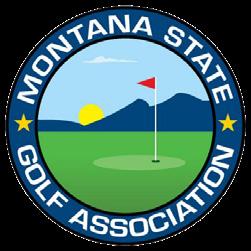
cap. You played well if you did. Generally, you should “shoot your handicap” about once every four or five rounds.
We have a unique opportunity with the USGA rolling out a trial version of their GHIN® Trial. You can demo a USGA handicap as my colleague, Emily Hulsey, explains on page 14
Many golfers are intimidated by obtaining a handicap as they cite their aversion to competitions. Do you not play in a league? Do you not want to play in a competition, or do you not even want to play in a game with friends? That’s okay! In my opinion, one of the most differentiating qualities in golf is the opportunity to play an equitable match with someone of a different skill level. There really are not many opportunities in other sports to do so. We are fortunate to have the ability to compete no matter the stakes with one another – provided that we are honorable, consistent and understand the benefits that go well beyond golf.
Honesty, integrity, and kindness are all qualities we should be able to agree are values
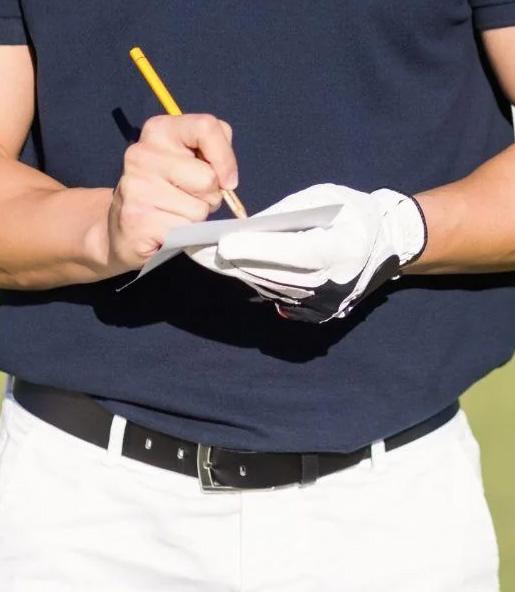
that we would want from a golf partner or maybe even the leader of our country.
There are those with a vanity handicap (lower than it should be), those who are sandbaggers (higher than it should be) and most of us are following the rules, entering our scores, and enjoying the endless pursuit of reaching our potential.
If you’d like my opinion on which candidate fits which description – I’ll leave that to authors and social media. If you want to share a story about handicaps– drop a line my way. You can find me on the practice green explaining to my teammates for my next tournament why my handicap finally lowered after being stuck all year. One less shot for us a couple days before the event – all because I had the gall to play well once. I hope it happens again.
Good luck out there!



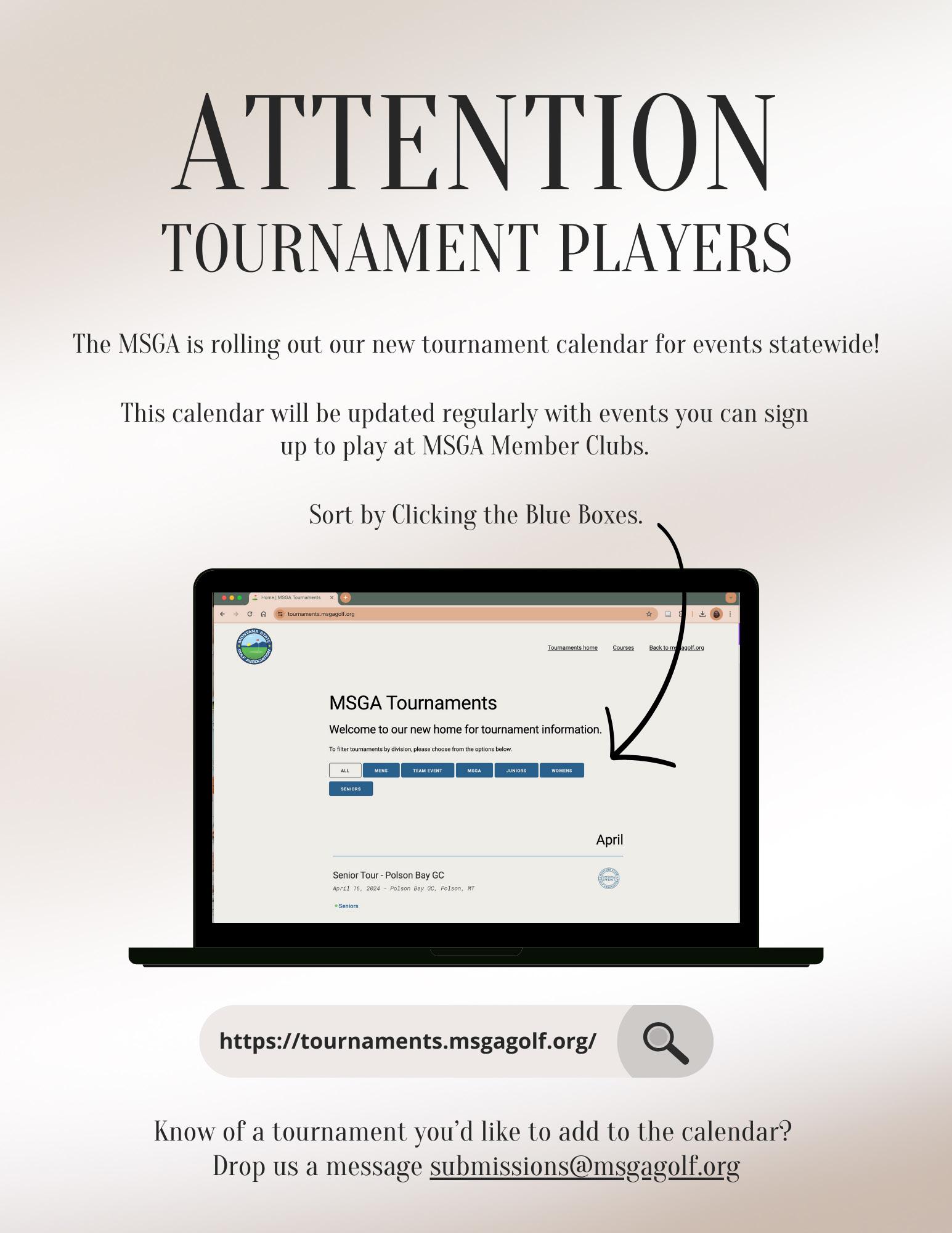
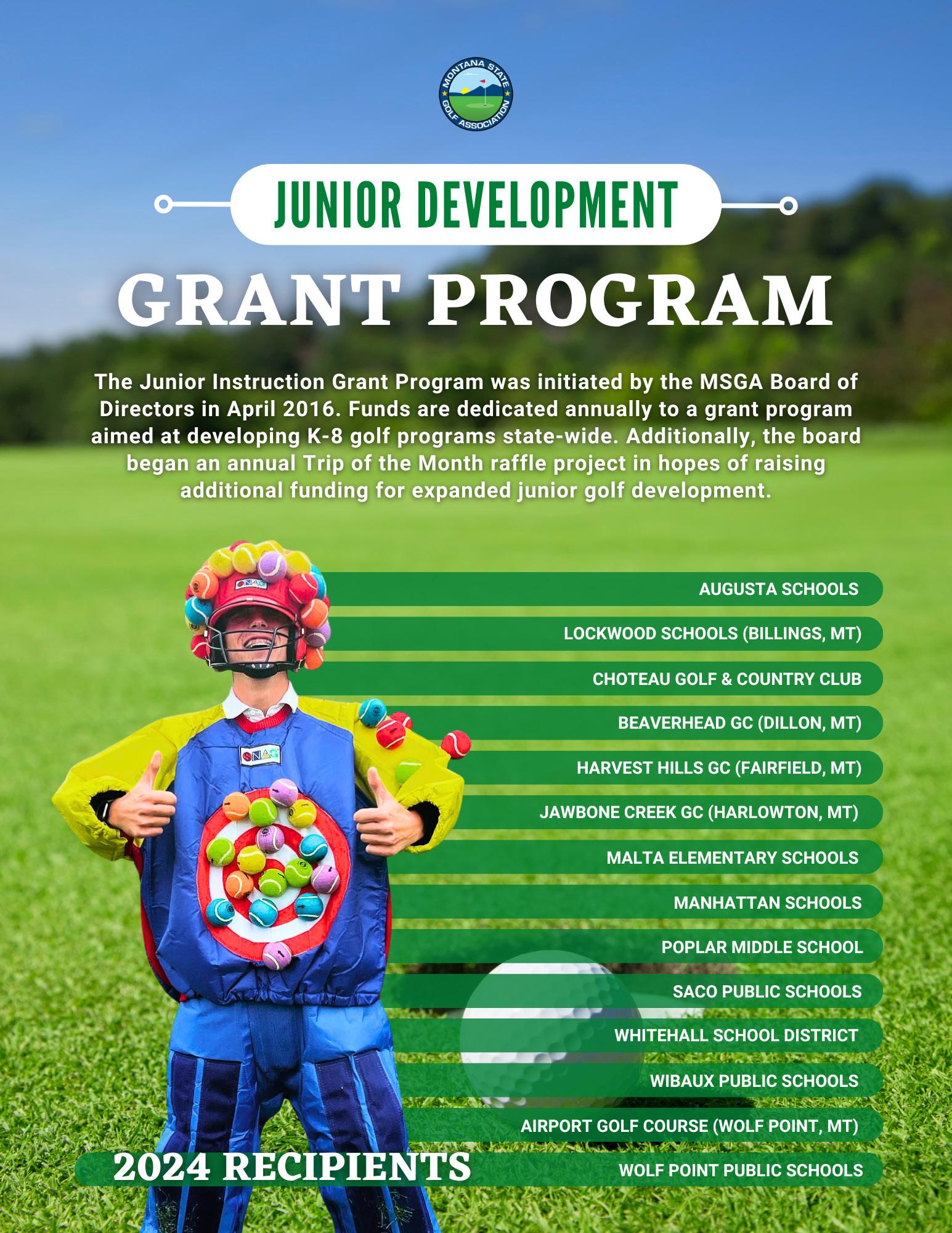
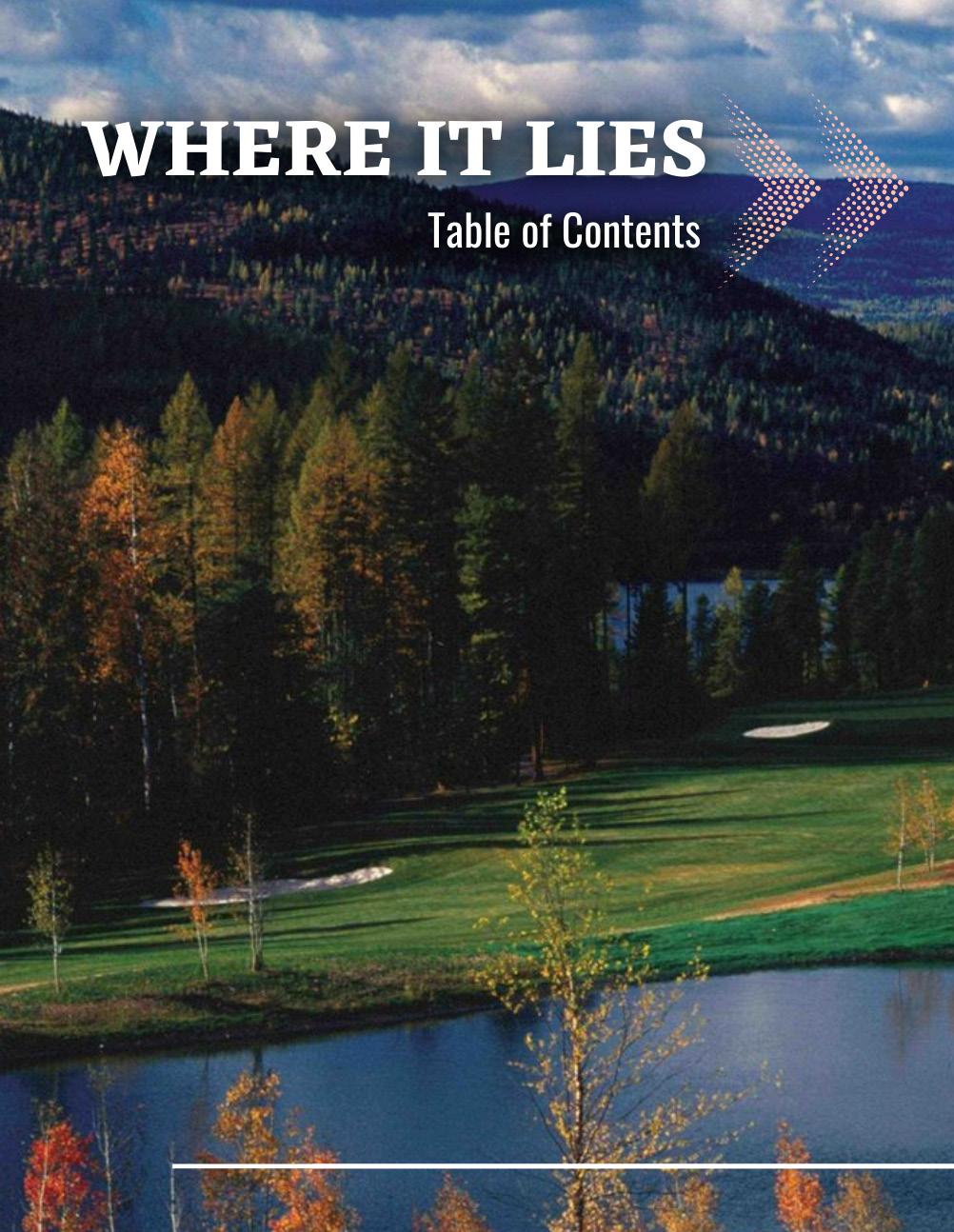


1. Who introduced you to golf?
My grandfather, Tom Trutner, introduced me to golf. My fondest early memories of playing golf were with him.
2. Who influenced you the most in your golf life?
I don’t know if I can pick just one. I believe that it takes a village to raise a child and I think that works here. I have had some amazing PGA Professionals as mentors and friends and each of them have had a unique influence on my golf life.
3. What’s your favorite part about being the PGA Director of Golf at Polson Bay Golf Course, and about being the head coach of the Polson High School golf teams?
Polson Bay Golf Course is an incredible place to work because of the people that call Polson Bay home. The community of golfers at Polson Bay is what makes the place so special to work.
My favorite part of being the head coach of PHS is the camaraderie of the kids and now being able to coach my son.
4. Outside of Polson Bay, what is your favorite course in Montana and why?
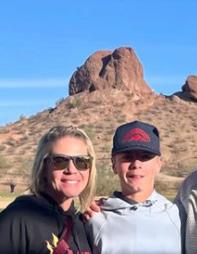
Rock Creek Cattle Company. It's just so wild and beautiful. I thoroughly enjoy [Tom] Doak architecture and Rock Creek is one of the most unique places I’ve played.
5. What is a dream golf course you’d like to play once?
Cypress Point Golf Club. We had the opportunity to follow Ryggs Johnston and ASU at Cypress this fall and it might be the most beautiful piece of land I’ve ever walked on with the Pacific Ocean and cypress trees.
6. What is your dream celebrity foursome (living or deceased)? Why would you choose them?
Max Homa ‒ probably my favorite golfer due to his grind to the top.
Michael Jordan ‒ the GOAT and my favorite childhood athlete.
Tiger Woods ‒ also the GOAT and probably could get us on Augusta National so that is a bonus.
7. What’s your most memorable moment on a golf course?
I try not to have just one, but always be grateful for all of what golf has afforded me and my family. So many wonder -
ful memories from my childhood to now revolve around this crazy game. No way I could pick one!
8. If you could change one thing about the game of golf what would it be?
Pace of Play… keep it moving
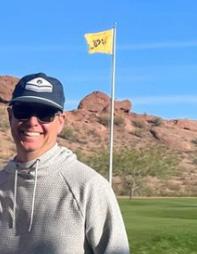
9. What advice would you give to beginner golfers?
Have fun and don’t take yourself too seriously!
Bonus: Lay up or go for it? Go for it always. Life’s too short to lay up!

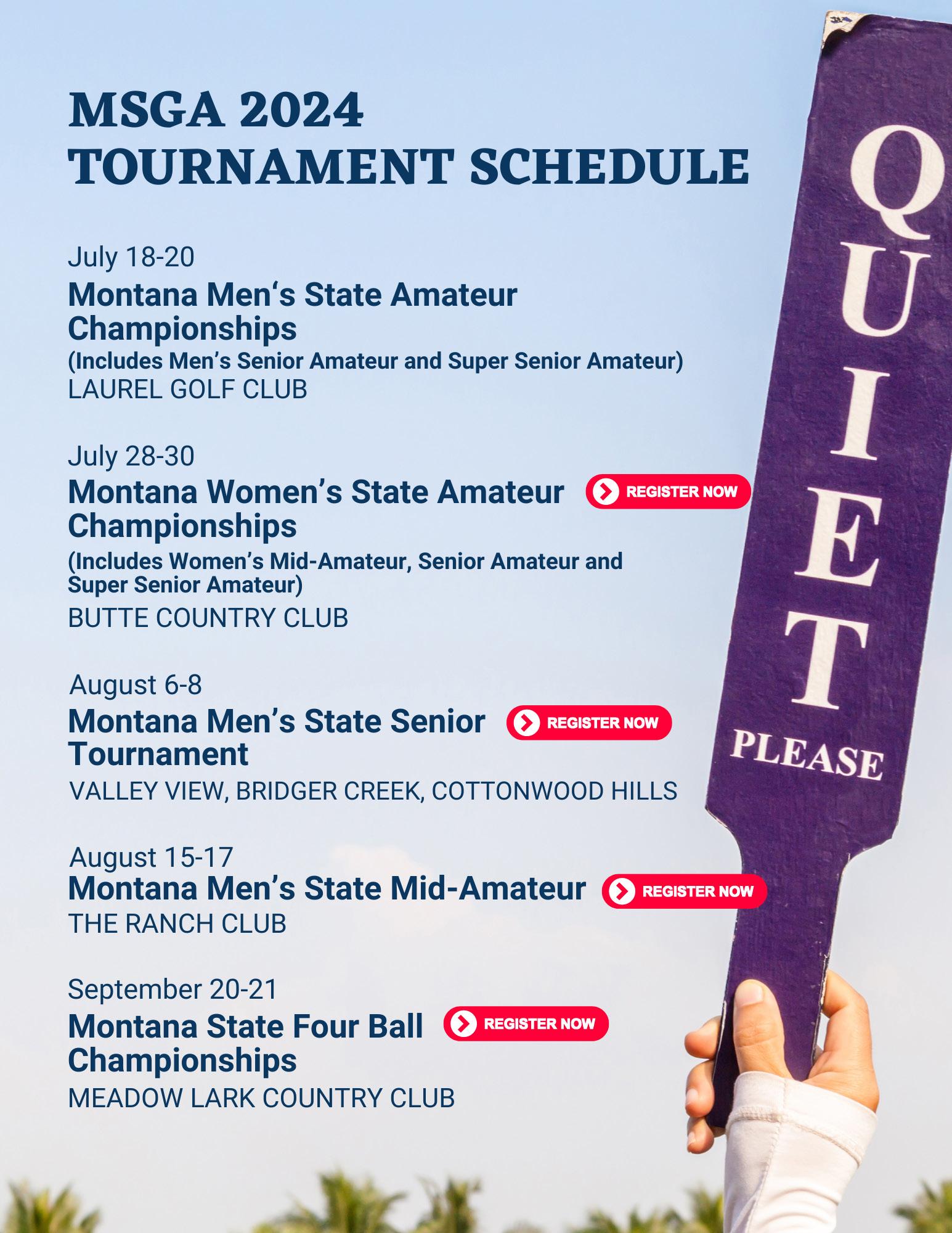

BY EMILY HULSEY
MSGA Director of Membership Operations
Do you have a friend or family member that plays golf but doesn’t track their handicap? Even if not playing in tournaments, having a Handicap Index® can be beneficial in many ways:
• It’s a great way to track your progress! Looking at your scoring record and statistics can help you see where your hard work is paying off… or where you need more work. And, it’s a great feeling when you see improvement!
• You can use it to set a target score. Using the tools in GHIN®, you can convert your Handicap Index to a Course Handicap™ for the tee you are playing. Then, simply add your Course Handicap to the total par and you’ll have your target score for the round, the score you’ll likely shoot if playing well.
• You can experience competition on your own terms. If you play with a friend or family member who also has a Handicap Index, you can have a fun and fair game with them, regardless of the difference in skill level. Using the Games feature in the GHIN® app, you can add up to four others to your game, compute their handicaps and keep score.
• New playing opportunities. When you sign up for a Handicap Index, you become part of a
growing community of golfers in your area. You also become eligible to play in MSGA sponsored events.

What if they aren’t ready to commit? No problem! The new GHIN® Trials feature is a great way for golfers to experience the benefits of tracking their progress. It provides an Estimated Handicap Range and access to limited app features for 30 days. While not an official Handicap Index, it gives you an idea of your playing ability. During the trial, you can post scores and track your stats (when posting scores hole-by-hole). GPS features are not available during the trial.
Minn Golfer
To start your trial, you can download and register on the GHIN® app and then post 54 holes (in any combination of 9 or 18-hole scores). You’ll receive an Estimated Handicap Range and have access to the trial features for 30 days.
After testing the waters, you can upgrade by registering for an MSGA membership through the GHIN® app or at msgagolf.org/join-the-msga. This grants you access to the full features in the app, including GPS. The scores you entered during your trial will be kept and you’ll receive an official Handicap Index, which you can also use in tournaments. You’ll also receive other MSGA member benefits.
If you have any problems, please contact us at support@msgagolf.org for assistance.
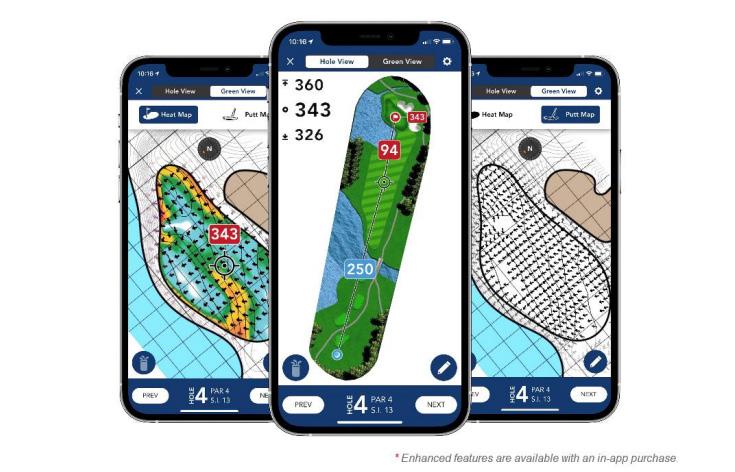









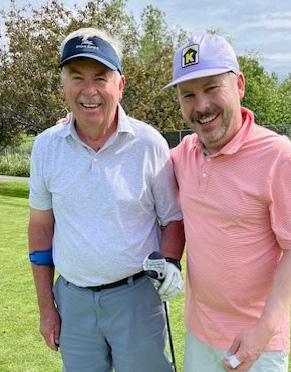
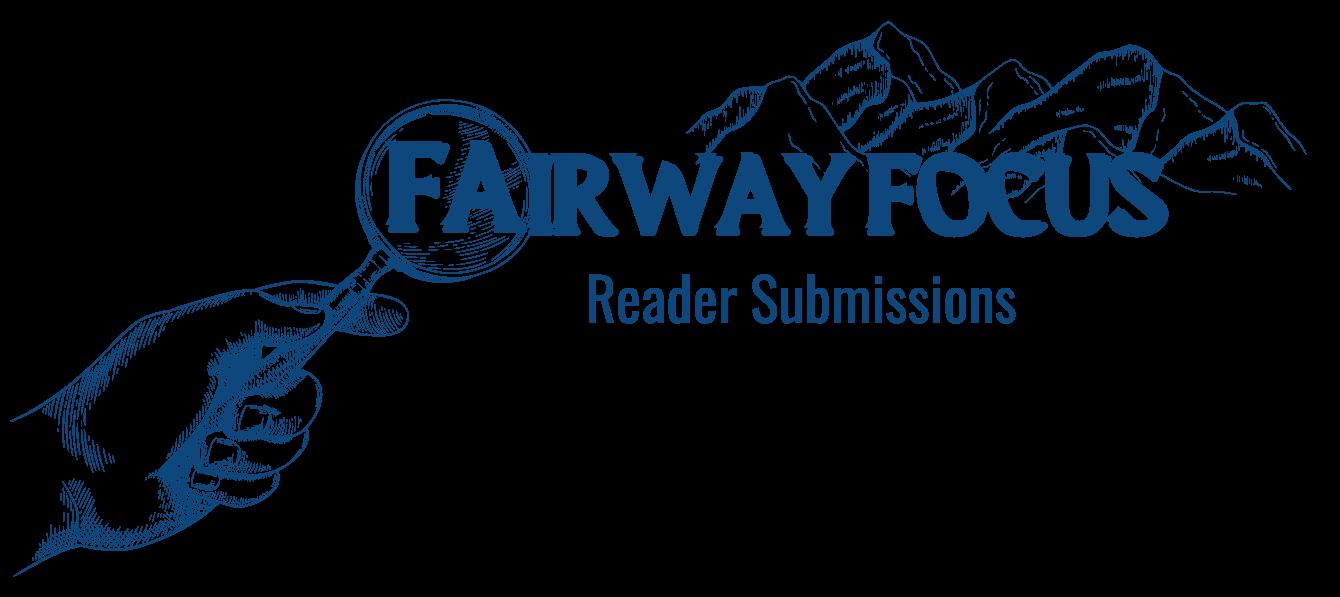
By Kent Kasting and Marjean Penny Bozeman, Montana
"I want to report to you that on Sunday, June 16, 2024, I was lucky enough to make a hole in one on #15, a 129-yard Par 3 at Valley View Golf Club in Bozeman, Montana. I used a Callaway Steel Head Plus #7. It was witnessed by my wife, Connie, and my son, Justin. It was special because it was Father's Day, with my son and the club was from my Dad's bag which I snagged after he went to the great golf course in the sky about 12 years ago."
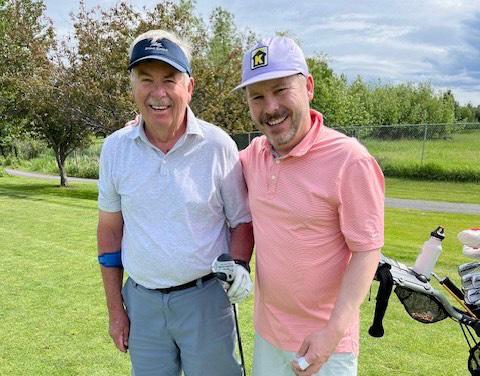
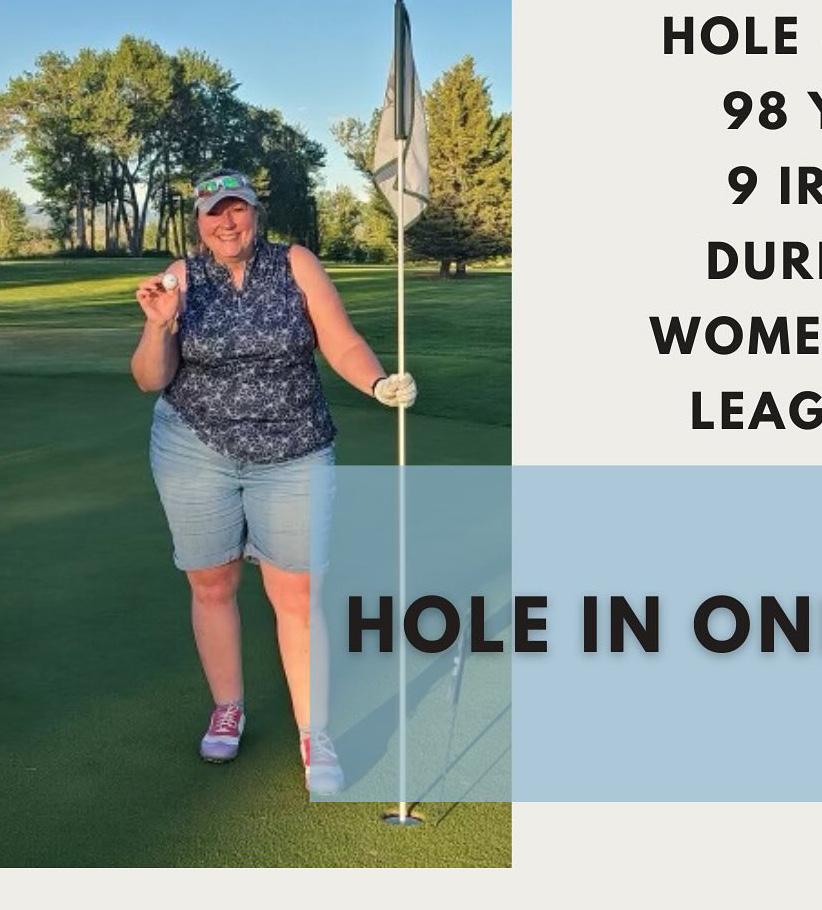
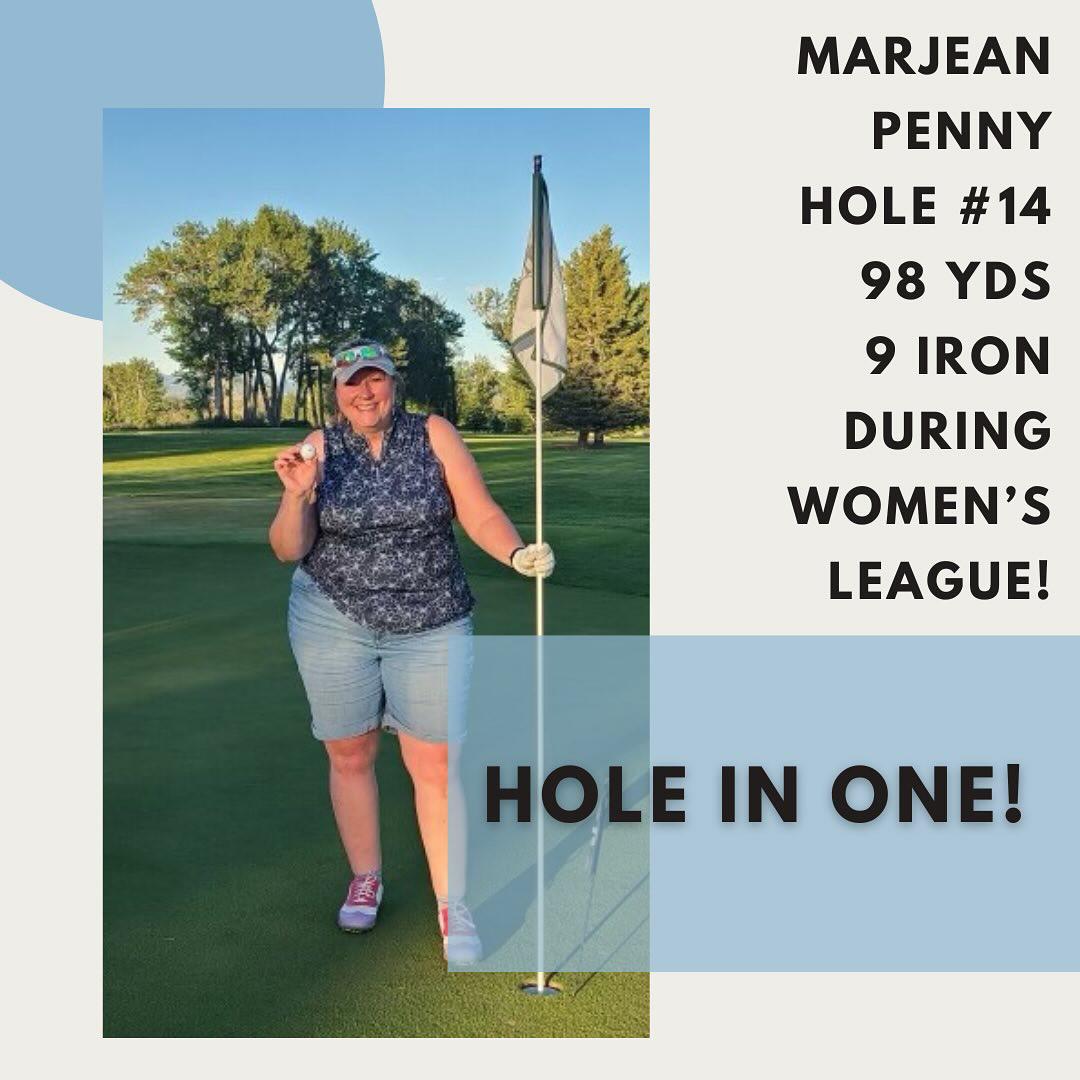
"Just want to share my hole in one story. I have been playing golf for 43 years. I have seen several holes-in-one while playing for the U.S. Army Golf Team in Germany. On Wednesday, June 12th, my bucket list... birthday wish came true! During Ladies League at Cottonwood Hills GC Hole #14, 98 yards with a 9-iron. I had a milestone birthday on June 11th and the best birthday gift of a hole-in-one on June 12th. I'd like to think there was a little divine intervention from my late grandfather, W.C. Hatfield, who taught me to golf as a kid. I know he was smiling when that ball went in the hole. I fell to my knees and cried... when you have golfed as much as I have... when that magical moment happens... it truly is a flood of emotions. My playing partners took pictures, which I have shared on Facebook and were posted by Cottonwood Hills GC. Thanks for providing great golf opportunities for people of all ages!"
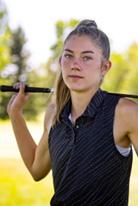
BY JESS MILLER
PJ BOATWRIGHT JR. INTERN
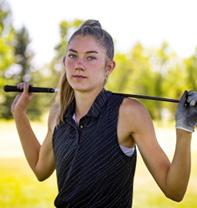
McKenzie has participated in numerous Montana State Golf Association District and State tournaments, including the Women’s State Am in 2021-22, the MSGA State Junior in 2022-23 and the Montana Junior America’s Cup Team in 2022-23. She has been an active member of the National Honor Society, the golf team and the basketball team throughout her four years of high school. In 2023, McKenzie contributed to her community by volunteering with the Par 3 Kids Camp and the Lauren Cummings Youth Basketball Camp. She has consistently been honored with Academic All-State, Golf AllState and All-Conference Selection each year of her high school career. McKenzie plans to attend Western Washington University.

Colin boasts an impressive high school playing record, traveling across the state to participate in fundraising tournaments and events such as the 4th of July Red, White, and Blue Tournament. He played Varsity Football, Golf and Basketball, and held a leadership position as the Basketball Team Captain. In 2023, Colin volunteered as a coach and referee at Little Hoopers and assisted at Bigfork Woodshop, helping to build furniture for the community. He was honored with All-State Golf recognition for all four years and was an Individual State Champion Golfer. Colin plans to attend Montana Tech.
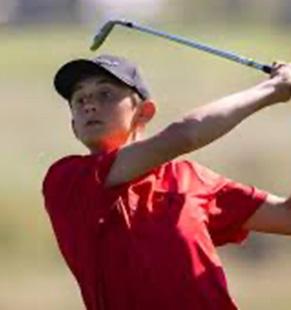
Landon’s amateur playing record includes participation in the Montana Men’s State Am in 2023 and the Montana State Juniors Championship in 2022-23. At Columbus, he was active in the National Honor Society, the golf team, the basketball team and served as Vice President of the Stillwater Co 4-H. He participated in the Key Club’s UNICEF Fundraiser and volunteered at the Stillwater Balloon Rally. Landon earned All-State 1st Team Academic honors in Football, Basketball and Golf, and was recognized with All-State Golf honors for all four years. He plans to attend Montana Tech.


Ashley has participated in the MSGA Women’s State Am in 2023, the State Junior Championship in 2021-23 and the Alberta/ Montana Junior Cup in 2023. She was involved in Polson High’s Math Club, Student Body, National Honor Society, and Link Crew. Ashley volunteered as a coach for the Mission Valley Jr. Golf Association and held leadership positions in many extracurricular activities. She was honored as Valedictorian and received MHSA AllState distinctions in both Golf and Academics. Ashley plans to attend Whitworth University.
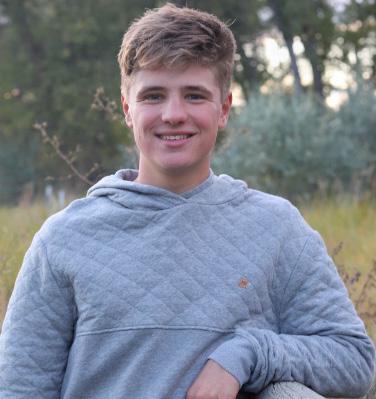
Keaton has participated in multiple city invitationals, Yellowstone County junior events and junior qualifiers. He served on Skyview’s Student Council as Senator and President, and held the position of Co-President for the National Honor Society. Keaton was a member of the Chess Club, Academic Team, Business Professionals of America and played on the high school’s tennis and golf teams. His community service includes volunteering at Harvest Church, Dad Camp and Little League Softball. His honors include MHSA Academic All-State for all four years, BPA State Finalist and National Personal Finance Challenge State Champion. Keaton plans to attend Montana State University.
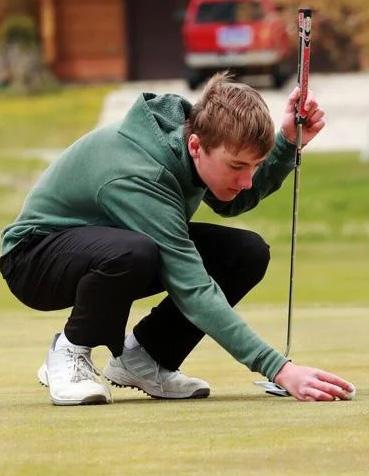

Tye has participated in many Montana State Golf Association District and State tournaments, including the MT State Am in 2022-23, the Montana State Junior in 2020-2023 and the Alberta Montana Cup in 2023. He recently won the 2024 Boys State Junior Championship at Polson Bay GC. Tye held leadership and mentoring positions, including roles in the National Honor Society, Varsity Golf Letters in Grades 11-12 and serving as a state representative in the Law Enforcement Academy. In 2023, he was involved in community service with First Tee, City Golf Tournaments and the Skyview Food Pantry. Tye was honored with Academic All-State recognition and Golf All-State honors for all four years, and he was named Exchange Student of the Month in his Senior Year. He plans to attend the University of Southern Indiana.
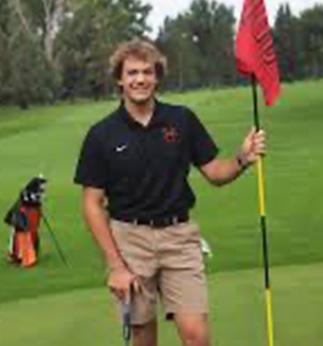
Keatin has participated in multiple invitationals during his four years, including two appearances in AA State Divisionals in 2022-23. He was a member of the Boy Scouts, Student Council, STEM Club and Ski Club at Billings Senior. Keatin served as captain for his school’s tennis team, golf team, and jazz, symphonic and modern bands. He volunteered his time at St. John's United by playing music for residents and performed for the Arts Without Boundaries Fundraiser. His honors include Valedictorian Class Rank 1, Superior Rating at MHSA State Music Festivals and MHSA All-State Academic recognition in golf and tennis. Keatin plans to attend Pilot School.
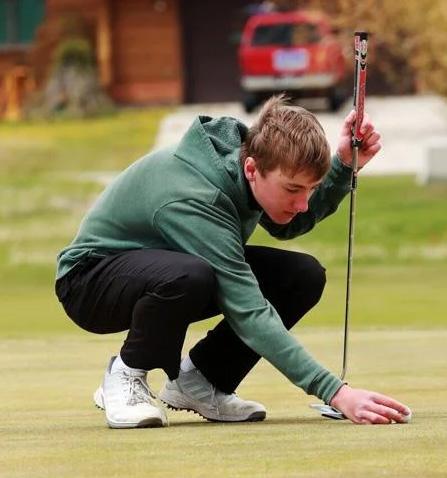
Colin participated in the Montana Men’s State Am in 2022-23, the State Match Play Tournament in 2023 and the Junior Am Qualifier in 2023. He was a member of the National Honor Society, the Speech and Debate team and participated in the Cross Country and Golf teams. His community service with the National Honor Society included helping veterans, fellow students and the overall community. Colin’s honors include All-State recognition in both golf and academics, and All-Conference awards. He plans to attend Oregon Tech.
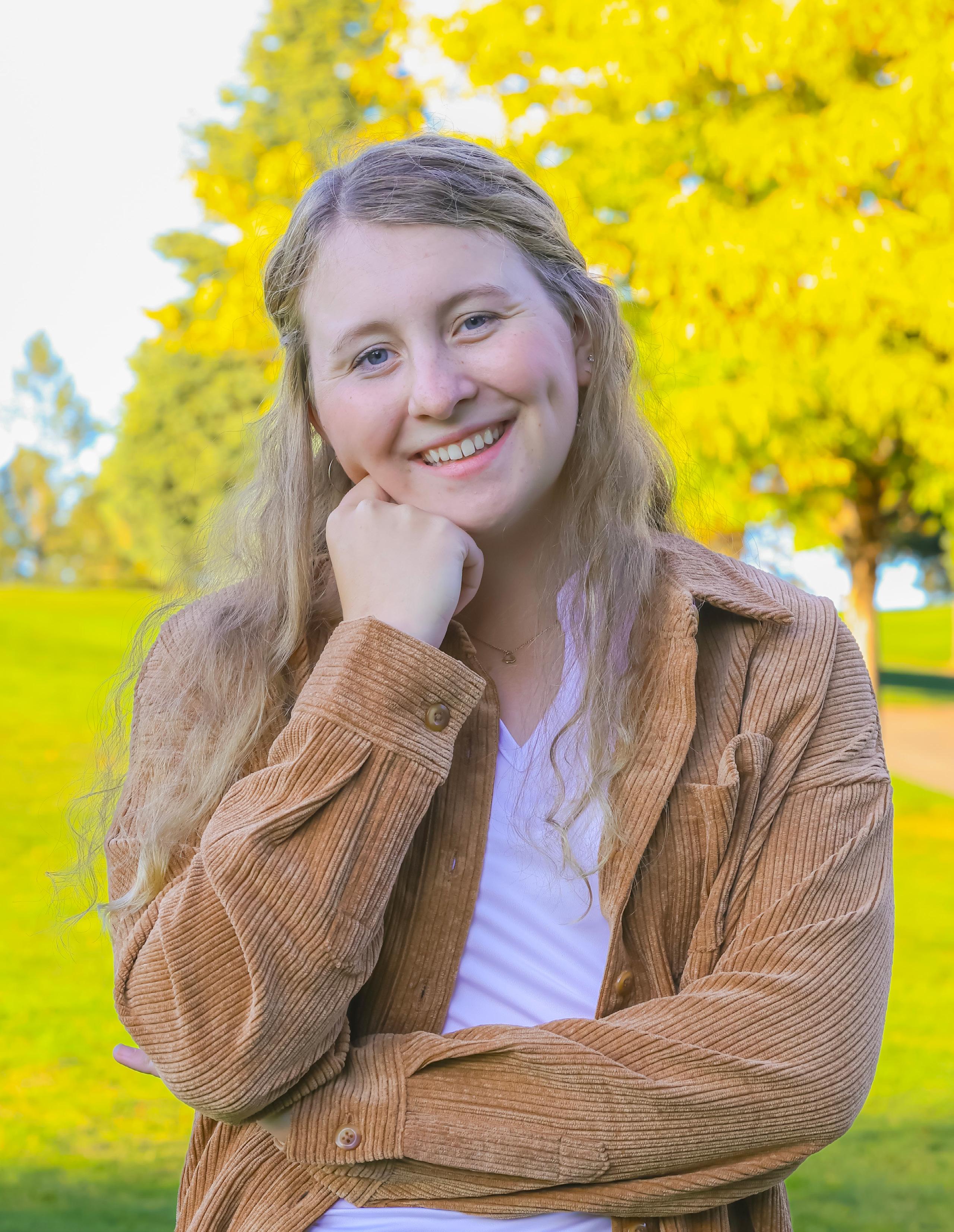
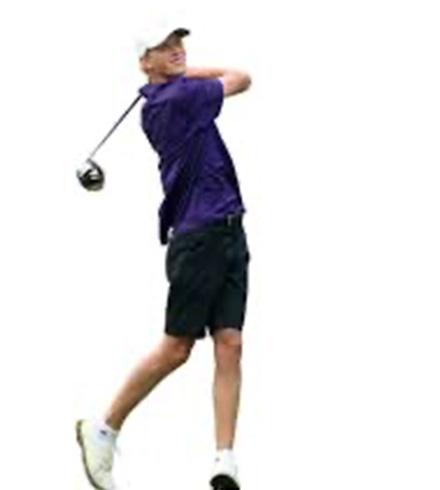
Carson holds an impressive amateur playing record, participating in events such as the Montana State Men’s Am in 2021-23, the AJGA Big Sky Qualifier in 2023 and the Pacific Northwest Golf Association Junior Amateur. He served as the Varsity Golf team captain at Polson High, was a member of the National Honor Society and a financial advisor in the PHECOM Club. Carson also played on the Esports Team and participated in Intramural Basketball. He volunteered at the Mission Valley Junior Golf Camp. Carson was honored as Valedictorian Rank 1 and received All-State recognition in both academics and golf. He plans to attend Montana Tech.
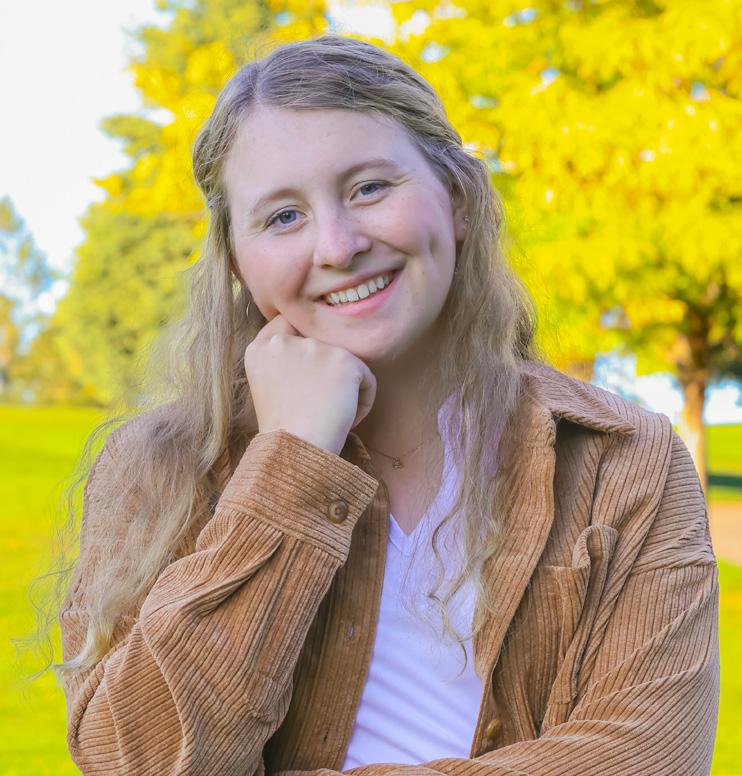
Rebecca has an extensive playing record, including participation in the Junior Masters in 2023, the MHSAA State in 2022-23 and the Junior Classic in 2023. She held leadership and mentoring roles in the Catholic Youth Coalition, Speech and Debate and served as Editor-in-Chief of Flathead High’s Publications. Rebecca was also involved in the Ski Club, the golf team and the National Honor Society. Her volunteer work includes assisting teachers at St. Matthew’s Catholic School and coaching at the Junior Buff Golf Camp. She was awarded the Montana Association Silver Star Award for Chapter Development, Civic Distinction and placed 14th in the 2023 MHSA Western AA Division for girls' golf. Rebecca plans to attend Montana State University.

Torrin has participated in the State Junior Am in 2017 and 2021, various club championships across the state and the Missoula Junior Tour from 2017-2022. He has held leadership and mentoring positions, including group leader for Drive, Pitch, and Putt in 2023 and Varsity Basketball and Tennis Captain. In 2023, Torrin volunteered as a golf coach for the PGA Junior League, worked as a landscaper for the Ronan school district and golf course and assisted with the Migrant Education Program. He was recognized with Academic All-State honors in Golf, Basketball and Tennis, and received All-State distinctions in Tennis and Golf. Torrin plans to attend Dickinson State University.
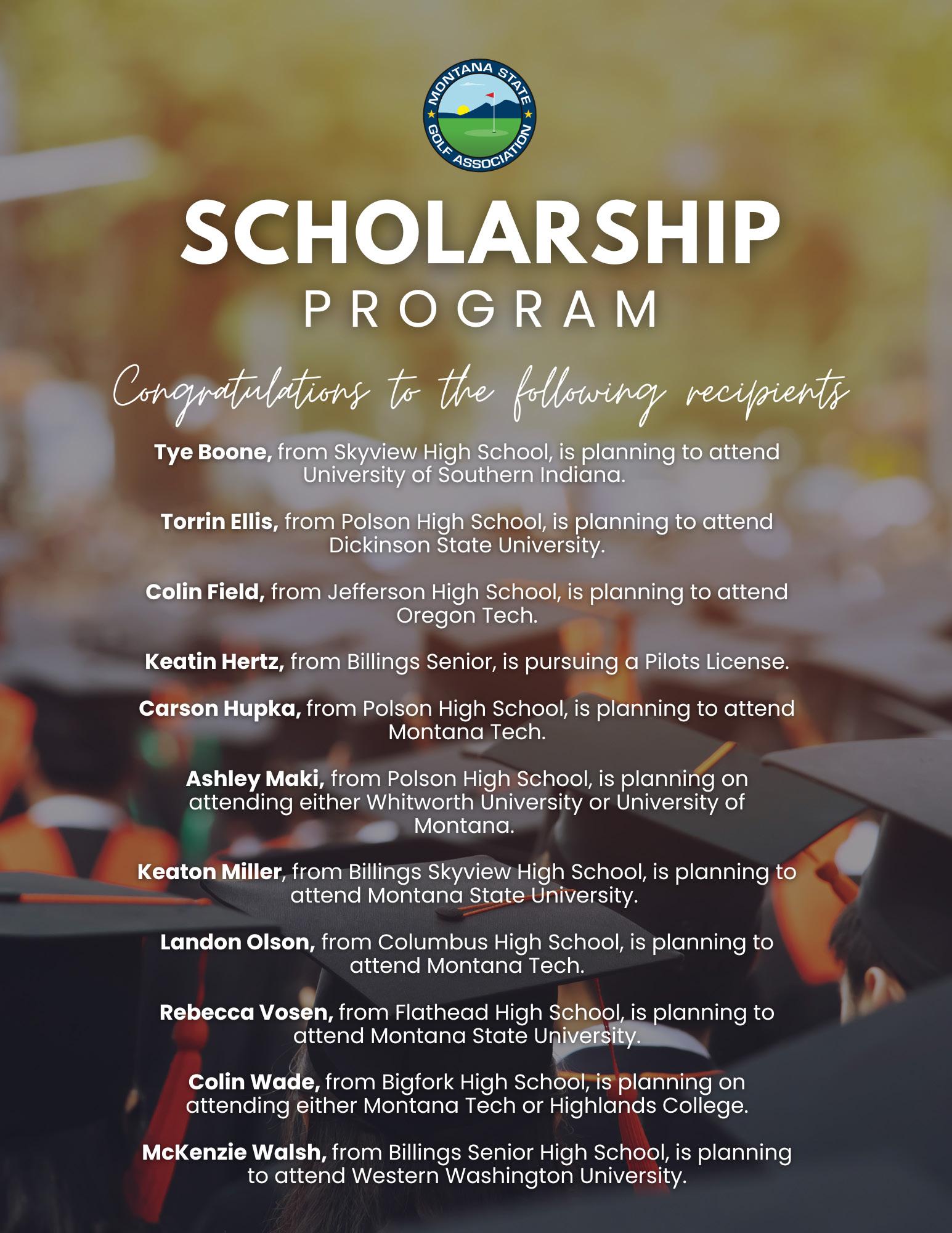

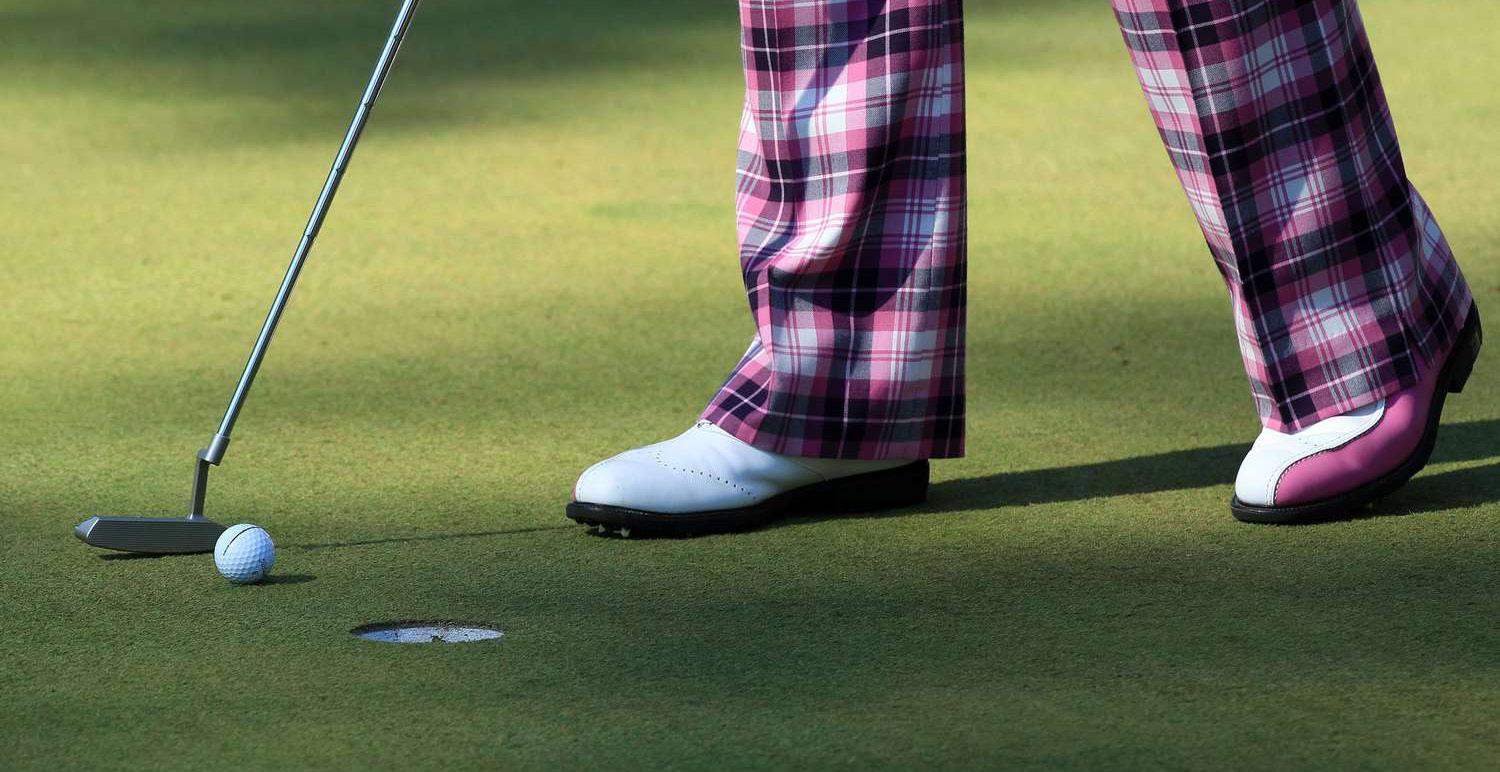
BY MICHAEL WILLIAMS MSGA Operations Manager
Men are from Mars.
Women are from Venus.
Men play golf.
Women bowl.
Ok, listen, I am a girl dad and over the last 20 years I have played most of my golf with my wife and the girls. Now that we are empty nesters, I find myself playing more and more with the guys. And I’m here to tell you: The ladies BOWL.
Hear me out. I’m not a bowler but I know a few things. When you bowl, you knock down 7, the computer says 7. You cross that line; the computer says BUZZ and the shot is a foul. You don’t say, “Well I would have made that, let me try again.” You miss, the sweeper comes out, mocking your miss, and resets a new frame. The ladies I play with BOWL.
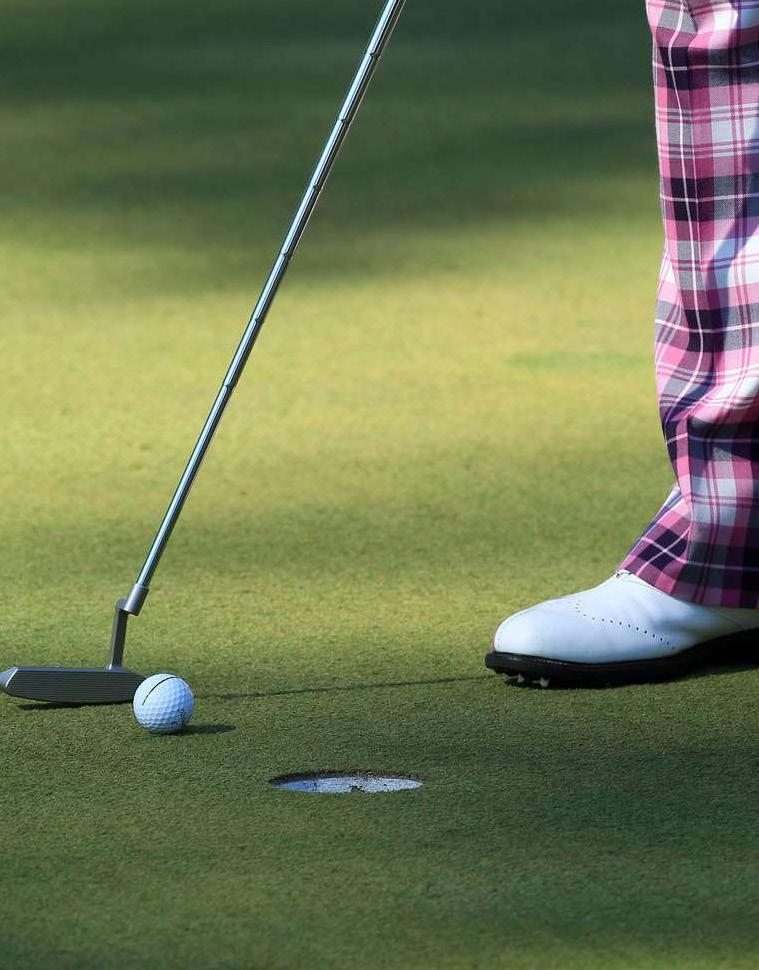
Everything counts. Every rule is enforced. Every putt is finished. The MACHINE doesn’t give mulligans. I play with my wife and two of her good friends, we always play for a friendly wager, the wager is total putts. At no point in my round am I ever assuming I can just pick it up. It’s BOWLING. The computers are always watching. If it goes in the gutter, well…it’s a gutter ball. Try again.
I’m a 0.4 my wife is a 13, one friend is a 9 and the other is a 19. The competition is thrilling. No one wants to lose that dollar. I think they hit their approach shots on the fringes on purpose so they can zero putt… but I digress.
My advice to golfers out there, who might look at their index and say, “Wait. What?” Remember, play like you would bowl. Count the pins you hit, then count the pins you miss. Take the fouls. Accept the gutters. Take dead aim and see what happens. And if you feel the urge to pick up that 2-footer…remember, my wife and her friends might be watching.
Just tap it in.
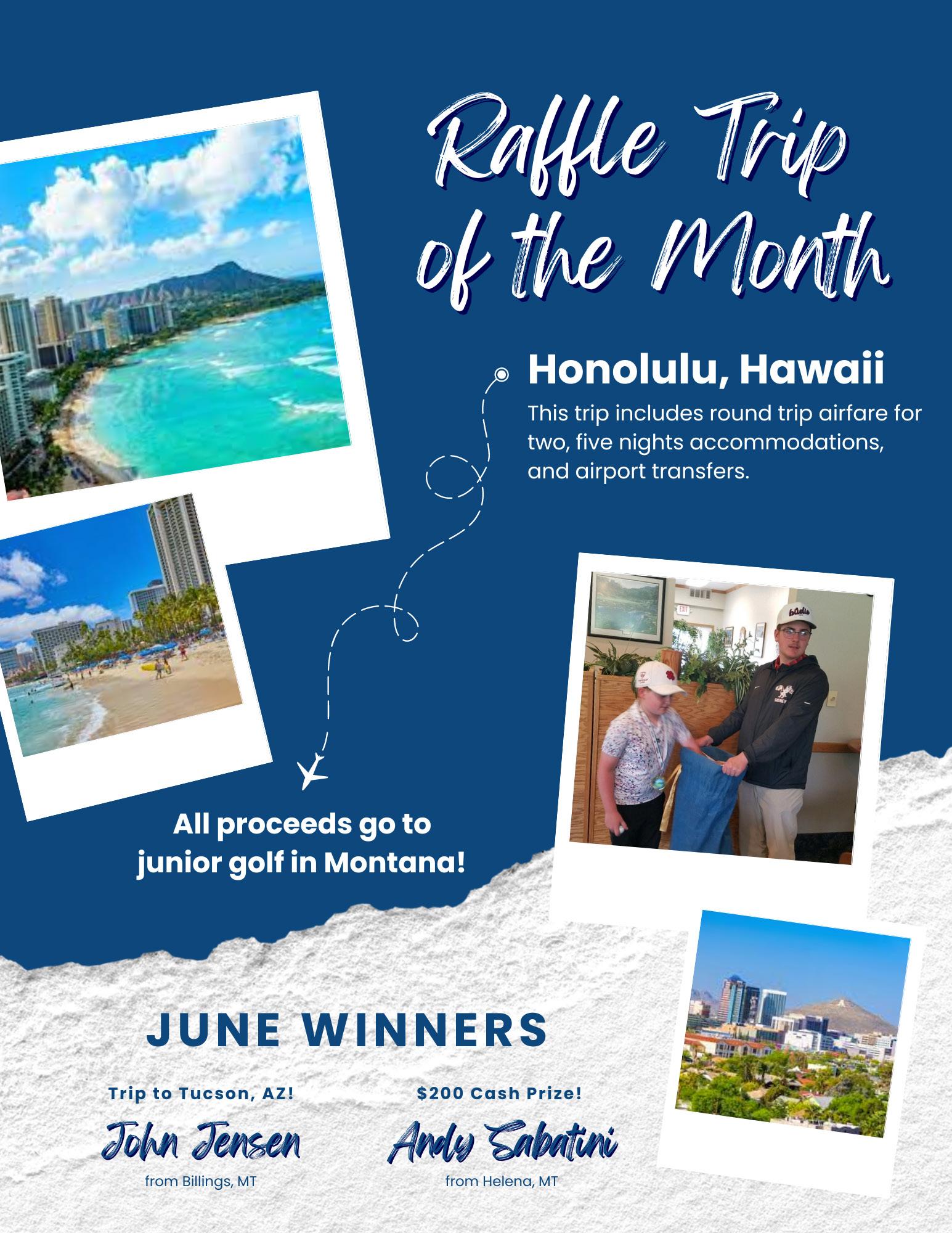
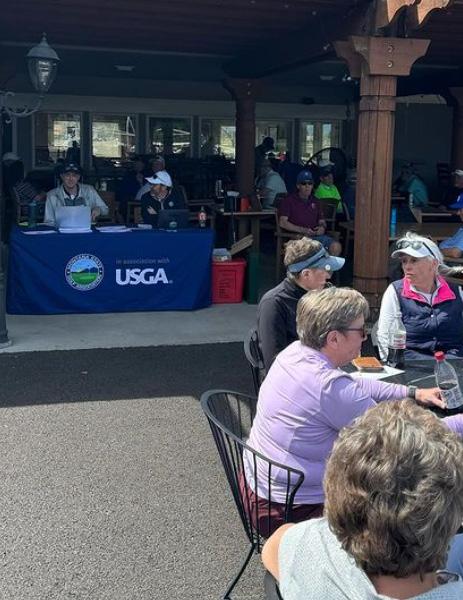
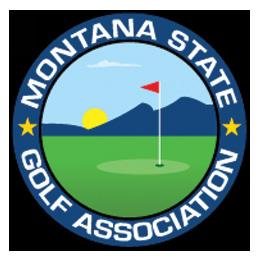
Men’s State Am | Laurel GC | July 18-20
Women’s State Am | Butte CC | July 28-30
MSGA Official Scorers are needed to help confirm competitor scorecards when their round is complete. The MSGA will instruct players to review their scorecards before officially turning them in. A scoring station shift is typically 2-4 hours long.
As players arrive at an event, the MSGA will have a player check-in. This is where players receive their tee prize and any materials for the week. MSGA staff will be available to assist with answering questions.
Player Check-in is busiest during practice rounds and round 1.
Throughout play, player assistance volunteers will work with the MSGA rules officials to learn the rules of golf, help answer player questions, and make rulings when necessary.
The voice to welcome players to the tee. Starters are responsible for providing players with their scorecards, hole location sheets, announcing players, and any additional information for the day.
During the event, the MSGA will have designated checkpoints on course for players. Check point volunteers will ensure scores are being uploaded to Golf Genius, help maintain pace of play, and make sure player questions are answered.
~ Josh Austin, USGA PJ Boatwright, Jr., Intern
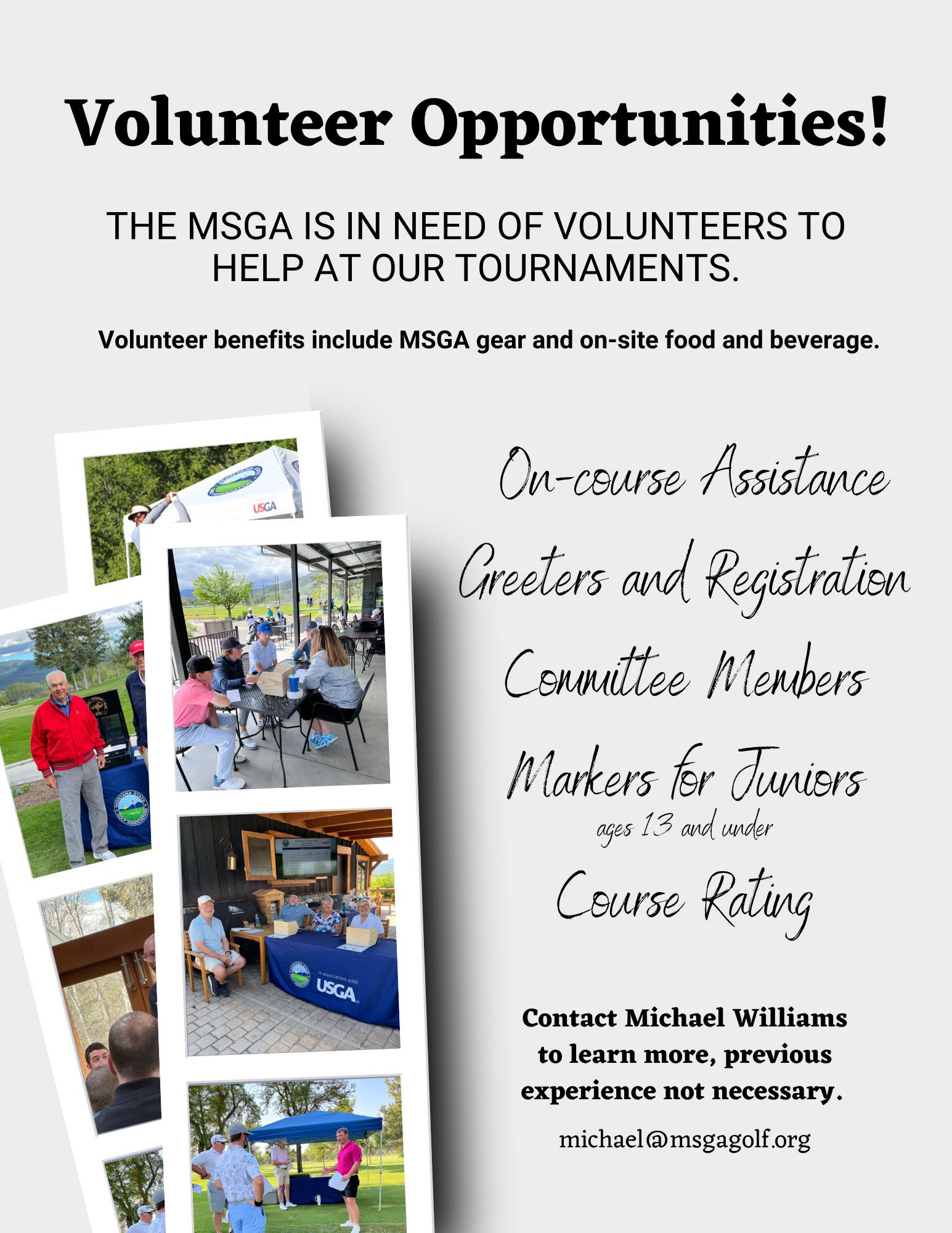


BY JESS MILLER
USGA PJ BOATWRIGHT JR. INTERN
As golf continues to explode in popularity, the pace of play on the course has become a growing concern. Rounds are gradually extending to 5 ½ hours long. While course design or tee time intervals are not in our control, the choice for what tee box to play from is. Most of the time, this one choice made prior to every round does not necessarily align with golfers’ skill level. This misalignment not only impedes the flow of the game, but also can take away from the enjoyment for all players.
Many golfers opt for tee boxes that are too long for their abilities ‒ leading to longer, more arduous rounds. Why is this issue becoming inescapable? It can be attributed to lack of suitable teeing options, overestimating personal capability, ego and peer pressure. As a result, golfers are facing shots that are too challenging, causing delays and frustration.
To better visualize the impact of tee box selection, picture the ideal approach shot distances for various par holes. For Par 3’s, a tee shot that requires less than a gap wedge feels too short, while one that demands more than
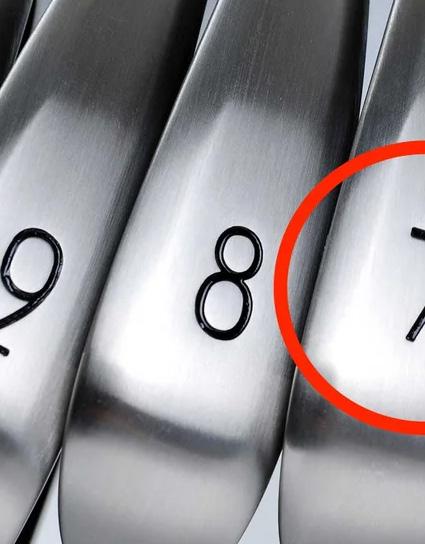
a fairway wood feels too long. The sweet spot is around a 6-Iron distance. Par 4’s feel too short when the approach shot is a driver-gap wedge combination, and too long when it requires driver-fairway wood. The ideal distance is typically a driver-6-Iron. Par 5’s feel too short if they require a driver-fairway wood-6-Iron combination. The optimal scenario would be a driver-fairway wood-9-Iron.
Utilizing the USGA’s “7-Iron Solution,” we apply the “Best Tees” system to define a more tailored approach to tee box selection. This system combines the definition of appropriate tees based on a golfer’s ability with their preferences for approach shot distances. By using the 7-Iron as a reference club, we can recommend the ideal course length for the average female and male golfer. Golfers tend to have a more accurate estimate of their 7-Iron distance compared to the variability of their driver.
By asking golfers how far they hit their 7-iron, we can provide a more definitive recommendation, reducing the variability associated with driver distances. Implementing the “Best Tees” system can enhance the pace of play, making rounds more enjoyable and less time-consuming for everyone involved.
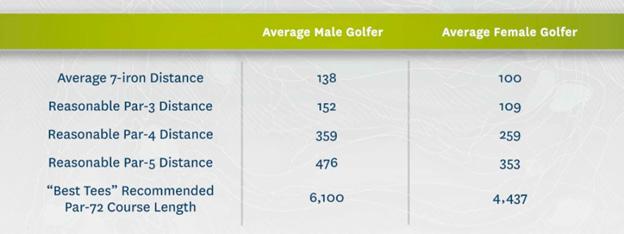
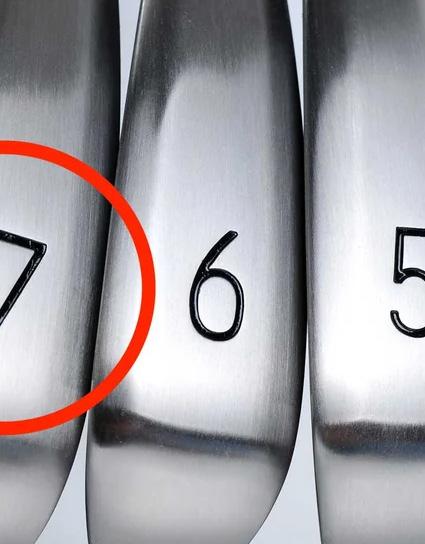


BY TIM BAKKER MSGA Tournament Director
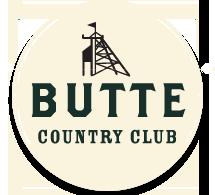



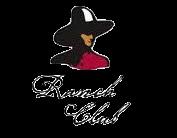

The Women’s State Amateur Championships return to Butte CC July 28-30. The 3-day event will crown champions in our Amateur, Mid-Amateur, Senior and Super Senior. Our annual banquet will be held at The Copper King Convention Center, a discounted lodging rate has been secured for participants at The Copper King. The rate is only reserved until June 28. Links to this rate can be found in your Women’s State Amateur registration confirmation email. Visit the MSGA Women’s State Amateur Registration page.
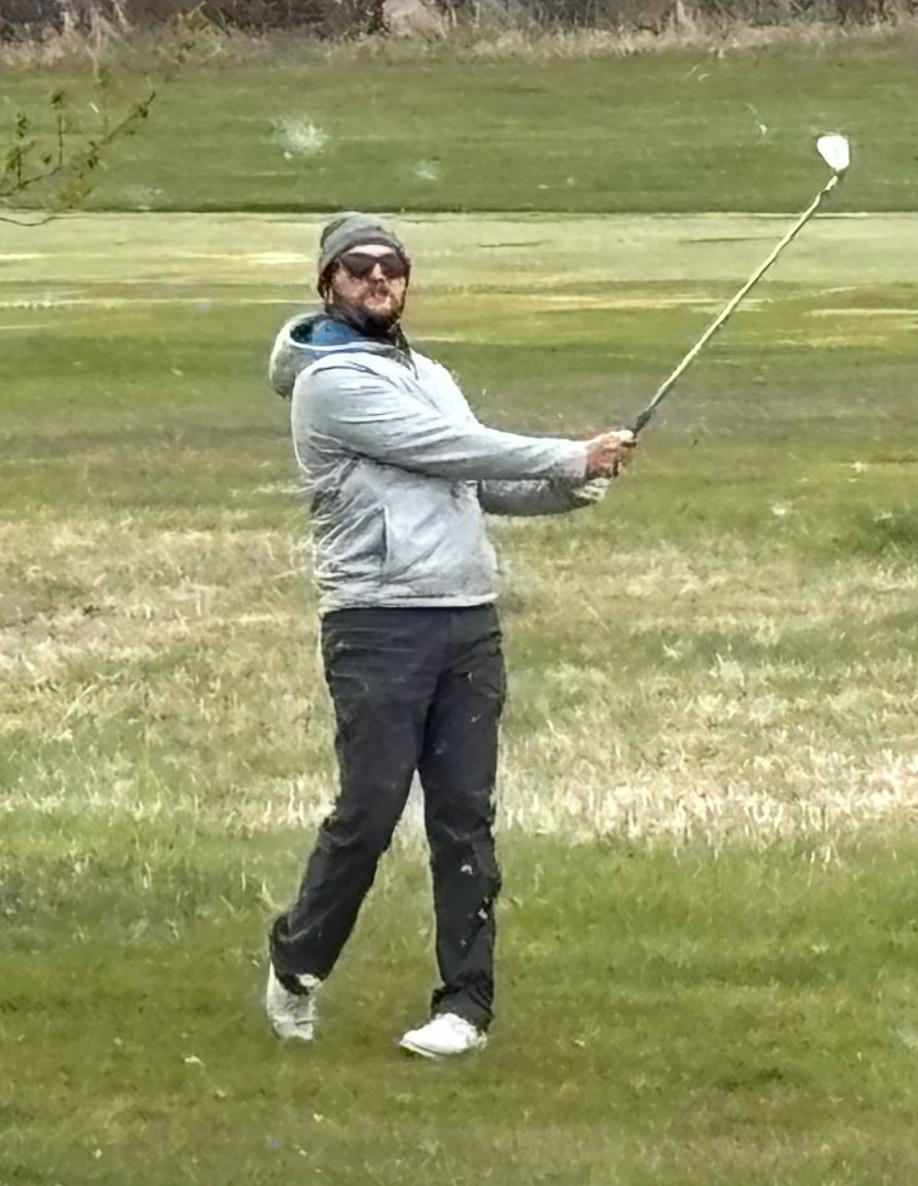
The Men’s State Senior Tournament in Bozeman will be held August 6-8 at three great courses in the Bozeman area: Valley View, Bridger Creek and Cottonwood Hills. Men ages 55 and up with a handicap index of 36.0 and less can join us. Registration also includes a wonderful banquet following round two of this fun and relaxed tournament.
The Mid-Am Championship is filling up quickly for our visit to The Ranch Club in Missoula this August. Players over the age of 25, with a Handicap Index under 10.0 are encouraged to register and test their skills on this links style golf course in the rolling hills outside of Missoula. The Ranch Club hosted the State Senior Tournament last year, this will be their first Mid Am Championship. We are sure it will be a great event. Register now.
The fourth annual Four Ball Championship will be in Great Falls at Meadow Lark Country Club, September 20 & 21. The Four Ball Championship is the MSGA’s only team event. Registration opportunities for Men’s, Mixed and Women’s teams are still available.
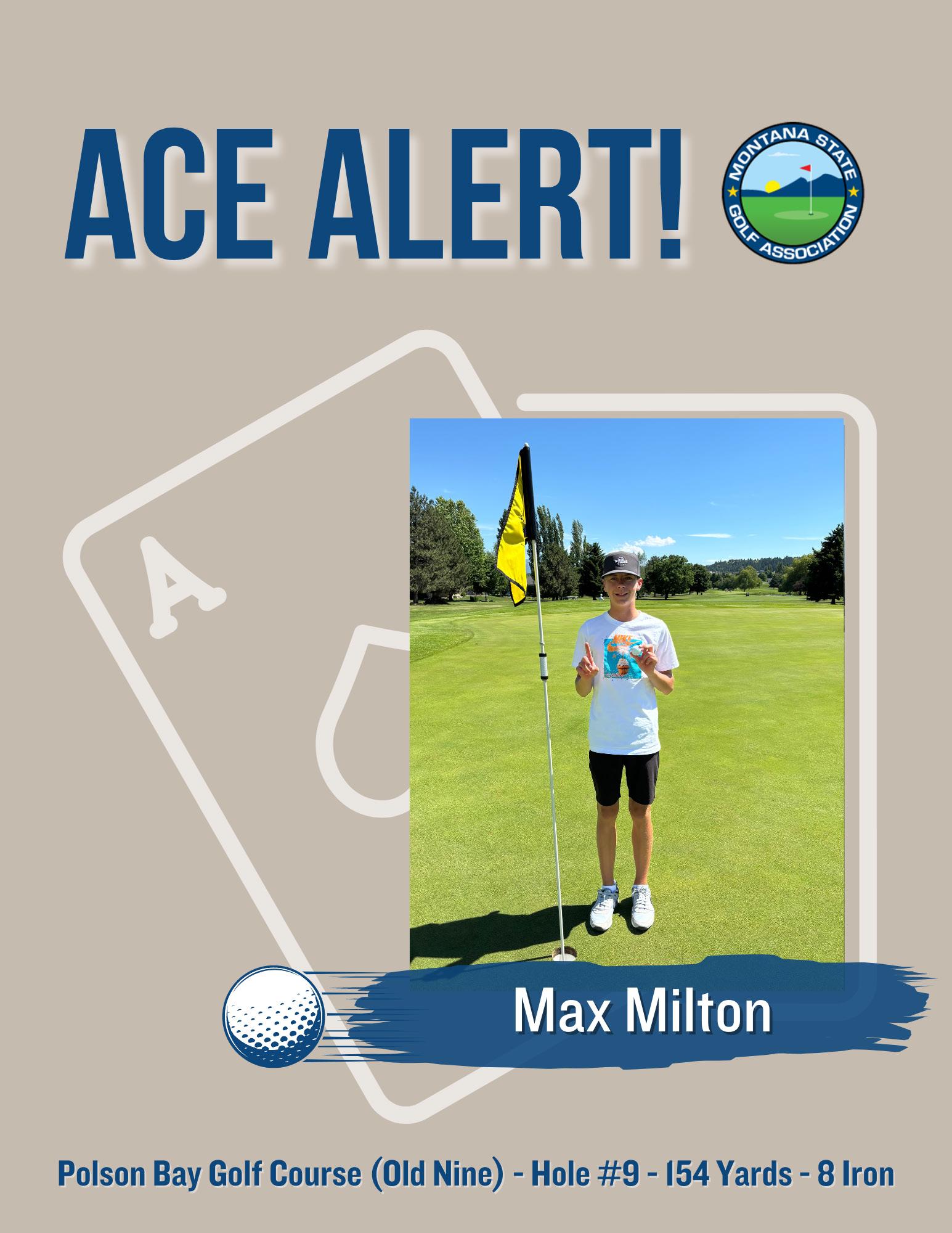
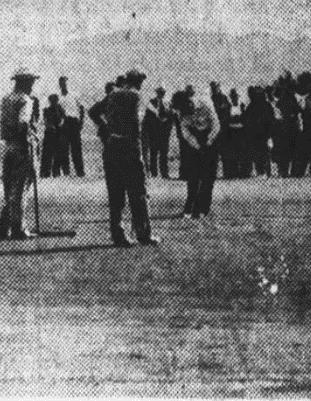
BY TY SPARING MSGA Communications Coordinator
Like so many other industries in the United States, golf made a very serious pivot towards the war effort during the early 1940s. Despite many of the major state and national championships getting canceled during these years, the sport was in fact heavily promoted by the federal government, often in conjunction with the USGA and many other local associations. The Office of Civilian Defense tagged golf as a key source of exercise for U.S. citizens, as the Director John Kelly stated: “this is the time when golf really must score for the physical and mental conditioning of American citizens under wartime pressures.”
Golf carried on in Montana, like the rest of the country, albeit with a few canceled tournaments and a strain on resources. But not all Montana golfers carried on under the Big Sky as many of the state’s top players found themselves spread far and wide supporting the war effort. When the MSGA canceled the 1943 State Amateur Championships, it was due in part to the notion that so much talent was missing from the event. Indeed, that was the case on both the men’s and women’s side of things.
Lue Jeanne Gronley was one of those notable golfers missing from Montana’s golf courses. The middle-child daughter of a Butte mining boss, Gronley won the State Amateur three years in a row (1940-1942), and at age 17 had a nationally syndicated article written about her claiming that she was “the nearest thing to a sports monopoly the Treasure state has ever seen.”
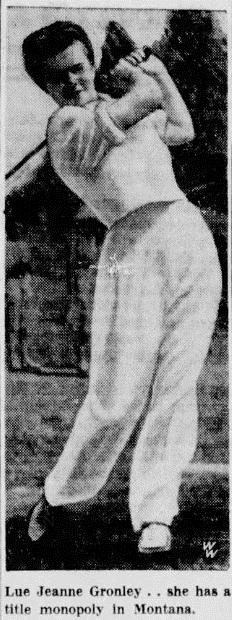

Having burst onto the scene in 1940 as a high school sophomore, Gronley won seemingly every golf tournament she entered, including the Montana State Women’s Amateur Championship. By 1942 she became only the second female to three-peat as the Montana titlist, joining Mrs. I.M. Wheeler who accomplished the feat over twenty years previously. All these years later and Gronley is still one of only five women to have won three championships in a row (Wheeler, Gronley, Edean Anderson, Helen Tremper and Cathy Studer).
And just like that she was gone. Shortly after winning her third title, the recently graduated Lue Jeanne Gronley moved to Richmond, California where she spent a couple years working in the defense industry. Richmond was known for its shipyards during World War 2, where by 1944 over 27% of it’s entire labor force consisted of women. Of course, this is the era of Rosie the Riveter in which over six million women went to work factory jobs for the war effort. Millions of others volunteered for the Red Cross and the Women’s Army Auxiliary Force. Gronley was one of these factory workers and she never returned to playing competitive golf in Montana.
Gronley’s two sisters June and Jewell Anne followed similar paths. Oldest sibling June joined the Cadet Nurse corps in 1945, and ultimately worked as a registered nurse at a children’s hospital in Oakland until 1975. Youngest sister Jewell Anne became a nurse as well, at first working for a VA hospital in Oakland before coming back to healthcare work in Montana. Jewell Anne would go on to win two Montana State Amateur titles, along with seven runner-up finishes. At one point she even served as the president of the Montana State Women’s Golf Association and in 1988 was inducted into the MSWGA Hall of Fame.
As for Lue Jeanne Gronley, sadly she died in 1975 at age 51 following a brief illness. Her career in Montana golf was short and brilliant, and she was even honored by the Butte Country Club in the years following her death with the Lue Jeanne Gronley Award, given to the Ladies' Club Champions.

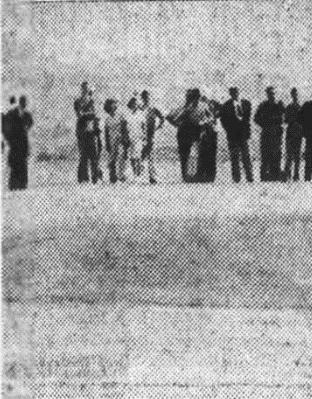

On the men’s side of things there were many golfers missing in the years surrounding 1943. During the war George Sarsfield, Lloyd Skedd, Pauly Sechena, Guy “Ox” Owen, Russ Swanson – all of whom were State Amateur champions – and many others in the golf community joined the armed forces. Those five players alone accounted for 10 state amateur titles and five runner-up finishes in a 21-year span (1935-1956). Not to mention the many other tournaments and club championship victories during that period.
The absence of these golfers at the usual events would’ve been palpable as they were clearly missed by their friends and family. Even though these men had new priorities that forced them out of the Montana golf scene, it was pretty clear that while they were away at war, they still had golf on the mind.
George Sarsfield was drafted in March of 1941, nine months before the United States even entered the war and he went on to spend five years with the U.S. Army. Sarsfield was one of 51 Butte men selected for a year’s worth of domestic military training. Sent initially to Fort Missoula, the Butte native was stationed at Camp Bowie, Texas for the remainder of the year, where he served with a tank battalion. The 28-year-old Sarsfield, who had already won two of his eventual four Montana State Amateurs, was then selected with a handful of others to attend the Officers and Candidates school at Fort Knox, Kentucky. When he was on a brief furlough in 1942, he told a writer for the Butte Daily Post that “I haven’t had a bit of time to play any golf down there because they have kept us so busy.”
Turned out Sarsfield needed to enter the European theatre to get back on the links. Having reached the rank of Captain, Sarsfield was part of a unit that oversaw the administration of German war prisoners after V-E Day. While in Reims, France, the former “Montana Golf King” managed to win an amateur golf tournament, and even received a plaque and gold watch for his efforts. In a letter he later wrote to the president of the Butte Country Club, Sarsfield noted that he also won another
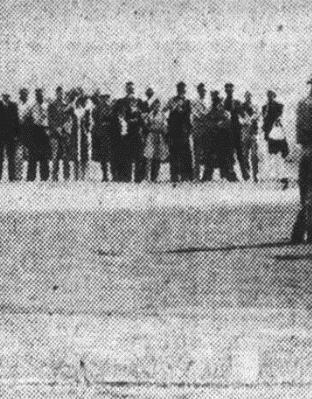
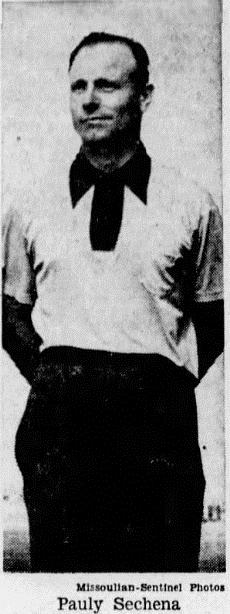
earlier tournament held in Brussels.
Apparently the occasional round in Europe kept Sarsfield pretty sharp on the course. He returned home for good in February of 1946, and by April of that year the Montana Standard was writing about how Sarsfield was “definitely serving notice he’ll attempt to regain city and state amateur links championships.” This was after he nearly broke the 18-hole record score at the Butte Country Club, his 62 just one stroke away from tying the mark. In fact, Sarsfield was runner-up at the Montana State Amateur Championship later that summer, losing out in a playoff to Gene Jones who we might remember as Montana’s only wartime golf champion ever crowned after the MSGA canceled the 1943 state event. Sarsfield eventually went on to win back-to-back titles in 1955 and 1956.
Along with golf, George Sarsfield went on to practice private law in Butte, along with serving the community in a variety of other roles including as President of the MSGA and the Butte Country Club. He was also part of the inaugural class of MSGA Hall of Famers in 1986.
Sarsfield certainly wasn’t the only Montana golfer who played while overseas, Lloyd Skedd played some interesting courses as well. Skedd was a 22-year-old law student at the University of Montana in 1939 when he won the Montana State Amateur Championship. (By the way 1939 was a tournament partially remembered for an incident when a local aviator was cited for repeatedly flying too low over the crowds at Meadow Lark Country Club). However, by July of 1941 Skedd was set to ship out from his hometown of Butte, Montana.
As he was leaving, the Butte Daily Post made note that he didn’t have his golf bag in tow, to which Skedd responded, “I am going to take my nine iron after that man Hitler—after all he is only worth a short chip shot.”
Skedd didn’t ultimately get a chance at that chip shot towards the Fuhrer, but he did have a few golf opportunities in the UK while he was in Europe. He spent almost four years overseas as a Master Sergeant in a bomb disposal unit
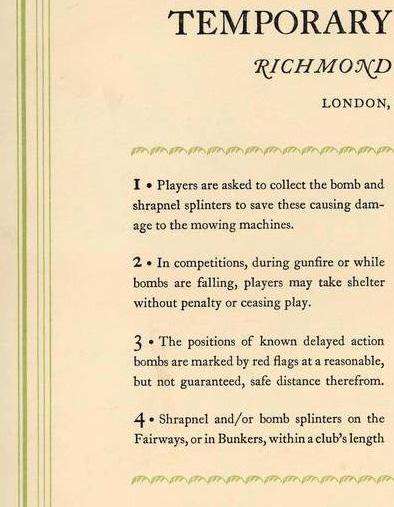
in England. While there he managed to play a few rounds on local English courses and at one point while finding himself briefly in Scotland, Skedd found the birthplace of golf and played a round on the hallowed grounds of St. Andrews.
While playing these courses Lloyd Skedd might’ve had a few temporary rule changes to consider. There was a strong desire amongst the English to keep the game going during the war, despite the reality that the country was regularly bombed by the German Luftwaffe. A range of such temporary rules like those made by the Richmond Golf Club in Surrey, England showed just how dire the situation had become. Among those was Rule 2 which stat-
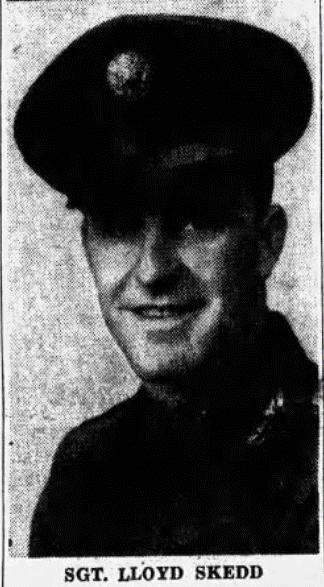
ed: “In competitions, during gunfire or while bombs are falling, players may take shelter without penalty or ceasing play.” Players were also instructed to pick up shrapnel fragments to prevent damage to the mowing machines and were even allowed to play another ball if their stroke was “affected by the simultaneous explosion of a bomb.”
No doubt golf was a little respite in a world turned upside down, but in the UK even that could be dangerous. Just a few years before Skedd was watching a goofball aviator in Great Falls flying too low over the crowds at Meadow Lark during the State Amateur, but in England he worried about planes dropping bombs during his round. “England is grim,” Skedd remarked while on furlough in 1944, “it has suffered a lot in the war.”
After the war Skedd settled down in Helena where he had a long and distinguished career as an Attorney, and even served as President and on the board of directors for the MSGA at various points. Like Sarsfield, he was a charter member in the original 1986 Hall of Fame class. For Skedd, and many others, golf wasn’t just a game, it was a way of life and he loved to talk about it. “On the golf course you can pretty much judge a person’s character,” he said in a 1984 interview with the Independent Record, “see whether they’re a chiseler, or a hothead, or a whiner. Give me nine holes of golf with someone and I can tell you whether I want to associate further with him.”
In the same interview the reporter asked him about winning the State Amateur in 1939, and whether or not he could’ve won a couple more if he was around, to which Skedd responded, “I might have. The war did interfere a little bit. But I have no complaints.”
Following in the footsteps of Sarsfield and Skedd were Pauly “Paul” Sechena, Guy “Ox” Owen, and Russ Swanson – winners of five state amateurs from 1941-1950. Owen was in the Army for a couple years, while Russ Swanson joined the Air Force the year after winning the 1942 title.
Then there was the 23-year-old Paul Seche-
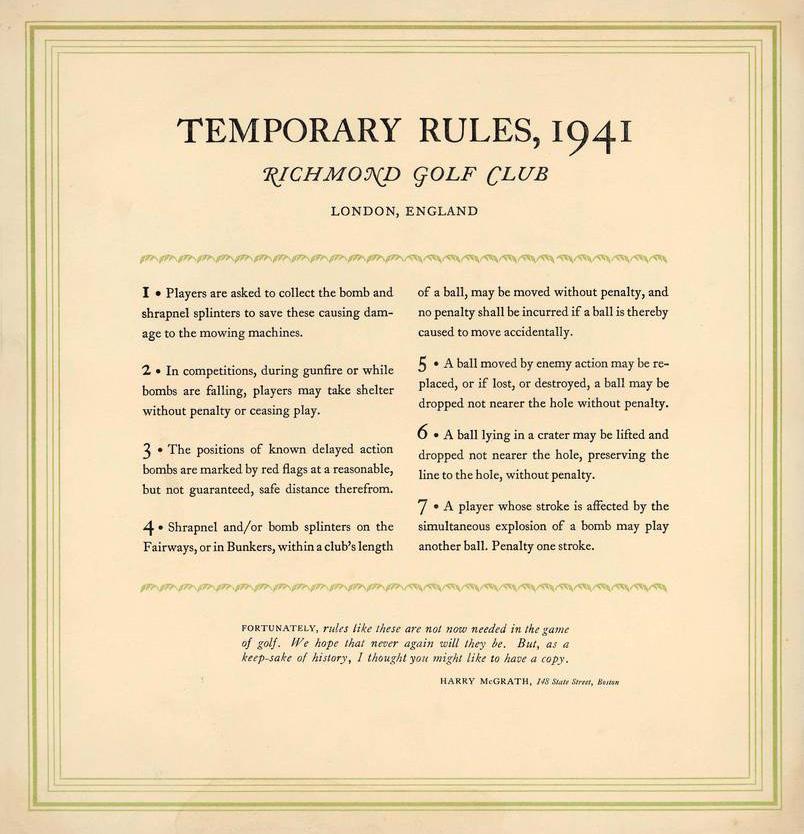
na who joined the U.S. Marine Corps in February of 1942, shortly after the U.S. entered the war. Growing up in Great Falls he moved to Missoula after high school where he worked for several years as an optical employee at a shop owned by Montana golf legend, Dr. Don Barnett. Sechena won the 1941 State Amateur Championship, but never had a chance to defend his crown in 1942 because he was busy
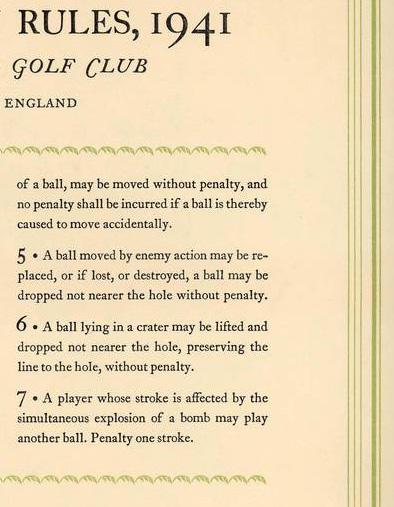
trying to stay alive in the South Pacific.
He wasn’t the only Sechena to leave either, as his three other brothers John, Julius and George also served overseas. Imagine a parent’s worry!
Like with Lloyd Skedd, the Butte Daily Post was keen on noticing that Sechena hoped he could “continue his niblick swinging when he
wears the colorful uniform of the U.S. Marine corps,” but clearly wasn’t too optimistic “as is evidenced by his failure to bring his golf clubs with him.”
Four months after leaving the country for the South Pacific, Sechena wrote a “colorful letter” to his old boss and “father of Missoula golf,” Dr. Don Barnett. Among other things, the humid climate took some getting used to as Sechena explained “the weather is just the reverse from good old Montana… you know what I would rather do right now than anything I can think of?
Just get out and roll in the snow, get it down my neck, eat it and wash my face in it.”
Sechena’s dark humor and quick wit was apparent in the letter to Barnett, but it was obvious he was in constant danger. “We got to the island just in time for most of the fighting,” he wrote, “shells go rolling overhead like a train through a tunnel, and everybody hits the fox holes all rolled up in a ball…Guess I have seen about everything around here including some dog fights.” He admitted later in the letter that he “already have had three close calls, but an inch is as good as a mile how about it?”
Nevertheless, golf was on the brain. The former champ requested Barnett to “keep the golf course green. I want to do some digging with a niblick when I’m through with my bayonet.” He went on to explain how he’d picked up a few souvenirs that he looked forward to showing folks back home as long as he didn’t “zig when I should have zagged,” Sechena joked, “the practice I had on the golf course ducking some of Newell Gough’s wild golf shots ought to help me some.” He even suggested that Barnett send him a club and some old golf balls in case he ran
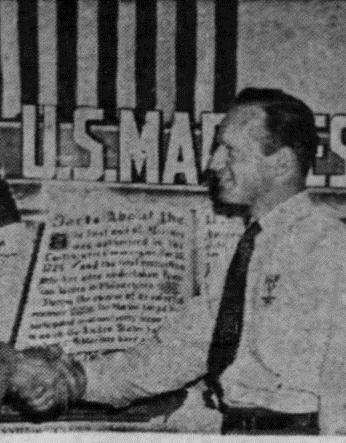
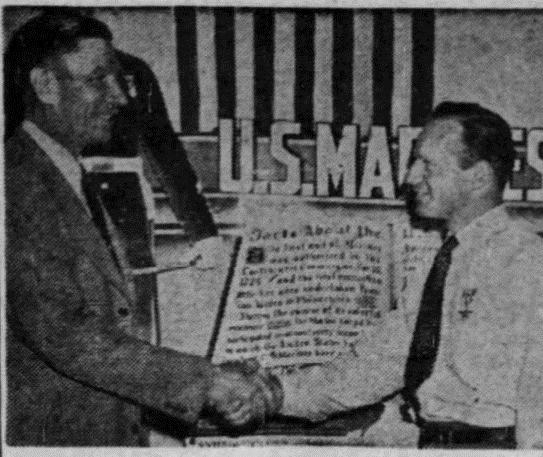
out of lead he could use that to defend himself.
After explaining how there wasn’t a tree on the island without bullet holes in it, in a moment of sincerity Sechena closed the letter explaining his new perspective after months of brutal warfare, “If I ever get back to God’s country again, little things like fire or flood or depression will bounce off me like hail off a tin roof. Give my best to all the gang.”
Throughout his time in the South Pacific, Cpl. Paul Sechena saw active combat at Guadalcanal, Tarawa and Saipan. While he was fighting on Saipan Island in June of 1944, Sechena was severely wounded during some heavy fighting. In a 2017 interview with the Great Falls Tribune John Sechena commented while reflecting on the four brothers’ collective service during World War 2 that Pauly “got shot up pretty bad in Saipan, Paul saw a lot of combat.”
Despite his wounds Sechena refused to leave
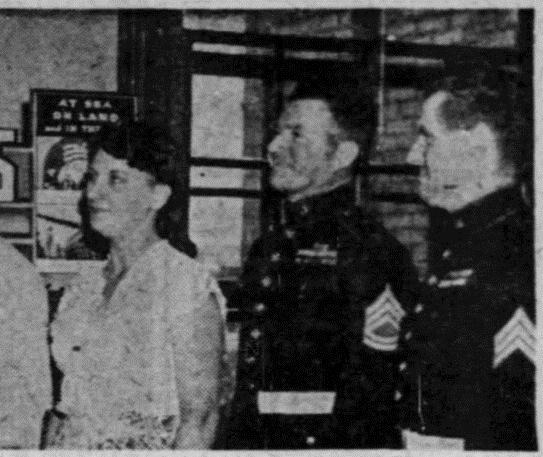
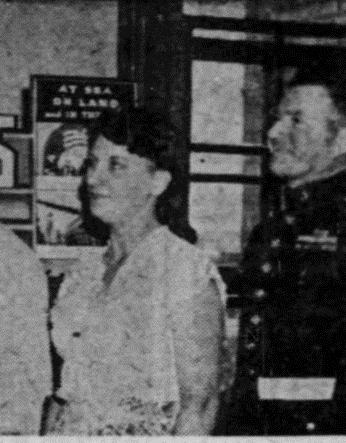
his post as a 37-mm gunner during a Japanese counterattack. He was later awarded a Silver Star for his actions. The citation he received with his Silver Star stated that it was awarded for his actions on June 15 and 16 of 1944, for “courageously remaining at his post after his squad leader had been killed, all but one of his gun crew wounded and evacuated and himself severely wounded by shrapnel, Corporal Sechena rendered valuable assistance in repelling two enemy counterattacks, thereby saving a vital portion of the main line. By his bravery and initiative in remaining at his post, Corporal Sechena contributed materially to the success of our forces and his zealous devotion to duty throughout was in keeping with the highest traditions of the United States Naval Service.”
After serving more than three years in the Marines, Paul Sechena was back in Missoula by 1946. The Missoulian commented that Sechena was working in town “with malaria and shrap -
nel scars as something to remember the war by.” He wouldn’t stay for long however as he and his wife Alice packed up for Kansas City, where Paul had signed up for a year long course on watchmaking and jewelry.
They returned to Billings where Sechena found work at Koppe Jewelry, and he even started playing golf again. It wasn’t long before he was up to his old ways –winning tournaments. After years of absence Pauly Sechena reestablished himself as one of the best golfers in the state, winning a host of state events along with winning his second Montana State Amateur in 1950. Like Sarsfield, Skedd, Guy Owen, and even his old friend Don Barnett, Pauly Sechena was part of the inaugural MSGA Hall of Fame class of 1986.
The Sechena family eventually made their way down to Arizona in the early 1960s where Paul lived until his death in 2003, at age 85.
This is the story of the Montana golf community during World War 2. Some golfers remained in the state and adjusted accordingly to some of the temporary war-time changes, while others traveled across oceans and settled for whatever they could find, golf-wise. In Pauly Sechena’s case it was thoughts alone that could access golf. However, there’s one more side to the story. From a POW camp in Germany, to Fort Missoula here in Montana, in the next issue we’ll discuss those non-golfers who found themselves caught up with the game in the unlikeliest of places.

BY TY SPARING
MSGA Communications Coordinator
In 1924 at the Meadow Lark Country Club, E.J. “Ted” Barker lost his semi-final match play round against Reno Sales of Butte. After seven straight years of winning the title, at that point Barker was the only male golfer to have won the event since Montana’s inaugural State Amateur tournament in 1917. Sales would go on to lose his finals match against another member of the Butte Country Club, Martin Kall.
In the Women’s Amateur, it was the second year in a row that Missoula’s Grace Barnett beat out Mrs. Frank Tucker for the title. One of the key early contributors to the Barnett family golf dynasty in Montana, Grace went on to win six State Women’s Amateurs. Fifty years later her grand-nephew would win the men’s title.
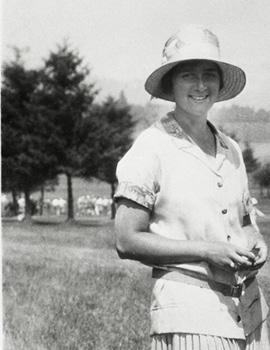
Missoula’s Mike Barnett held off three-time defending champion Gene Cook, and six-time winner Ed Zemljak to take his first of two straight Montana State Amateur golf titles. Barnett, along with Grandfather Don and dad John, were all three part of the inaugural MSGA Hall of Fame class of 1986 for their varied contributions. After 57 years of attempts at the Men’s State Amateur title, a Barnett finally captured the crown. “I won it for you and dad,”
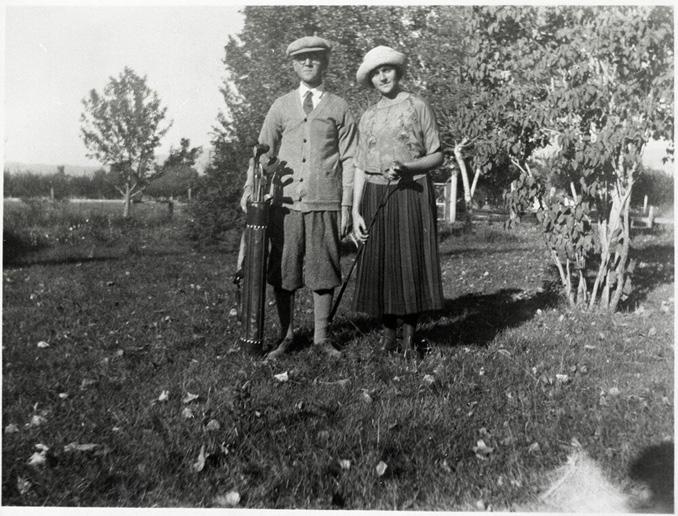
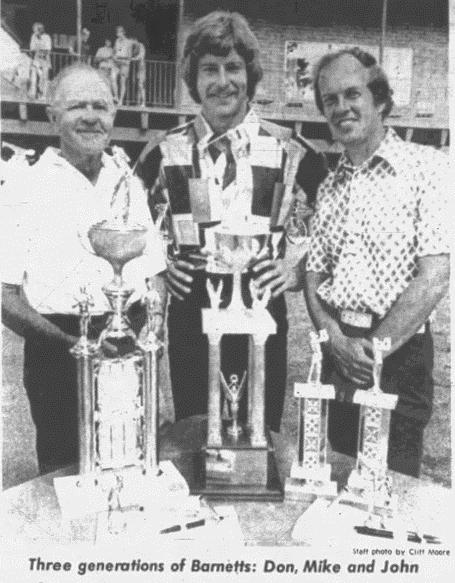
Great Falls’ Scott Anderson birdied the final hole of the 2004 Men’s State Amateur, giving him a two-stroke victory over Josh Gold and Spencer Williams. Anderson, who is a former All-Conference golfer for Ohio State University, is still playing exceptional golf, just last year he led an American squad of 12 golfers in the Bridges Cup in France, which is a high-level Mid-Amateur event.
Columbus’ Jasi Acharya overcame a threestroke deficit in the final round, eventually winning the 2004 Women’s State Amateur by one stroke over Britney Hayes. For Acharya it was the first of two straight championship wins. Like Anderson, Acharya is still playing excellent golf. A former All-Conference golfer at the University of Montana, last September Acharya won her record-tying fifth consecutive Minnesota Women’s Mid-Amateur Championship.

a jubilant Mike said to his grandfather after holing out on 18.
Imagine how good of a golfer you’d have to be to win back-to-back State Amateur titles on four separate occasions. Helen Tremper did that and more, with the 1974 title making it her 14th out of an eventual 15 State Amateur victories. A golfer who dominated over two decades, Tremper was still as competitive as ever, scoring birdies on three of her last five holes of the tournament, to give her the win by 20 strokes.
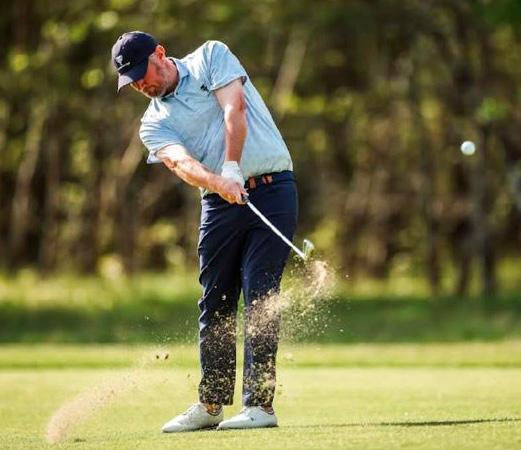
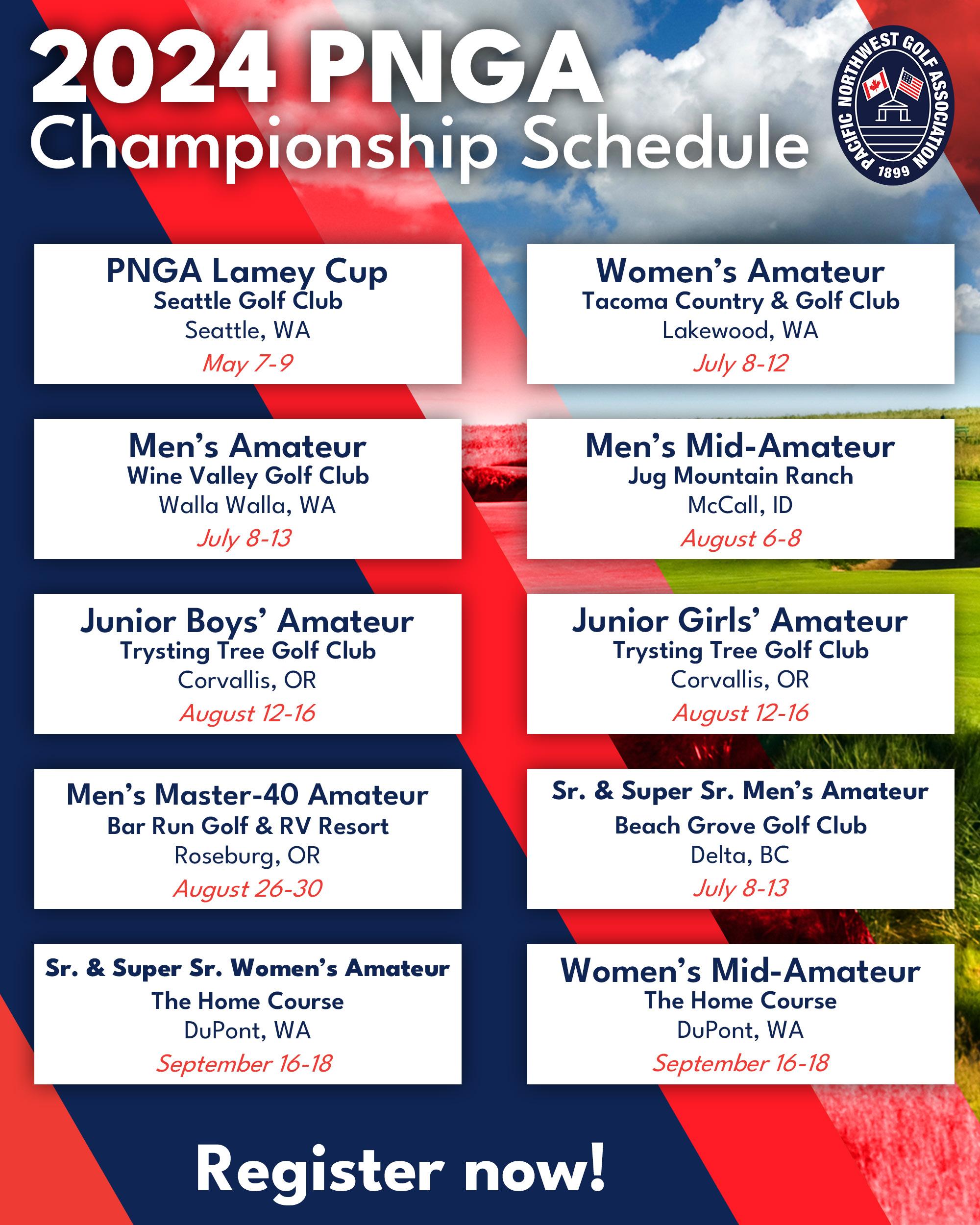

BY BRIAN GIETKA USGA AGROMOMIST - EAST REGION
Taking divots during a round of golf is unavoidable, but getting them to heal can be a challenge for superintendents. Divot recovery has become a big topic of conversation at many courses as the boom in play has increased the number of divots on tees and fairways. Let’s talk about some of the factors that influence recovery and how golfers can help the process.
The way different grasses grow has a big impact on divot recovery. Some grasses have stems that grow horizontally – like creeping bentgrass, Kentucky bluegrass and bermudagrass – which helps divots fill in faster. Turf density above and below the ground also matters. When you take a divot in many cool-season grasses, it goes deep into the soil.

Warm-season grasses like bermudagrass and zoysiagrass have a dense mat of roots and stems beneath the surface that keeps divots shallower. Combine that with the ability to grow new shoots from those subsurface stems and you can get faster healing.
In addition to healing from roots and stems, seed can also help divots recover for some grasses, but not all! Perennial ryegrass is famous for its quick germination – it can sprout from seed in less than a week during ideal conditions – making it a favorite for divot mix. Other grasses are not so quick to sprout. Creeping bentgrass germinates in around two weeks, and Kentucky bluegrass can take up to a month. If the course wants to match the seeds in the divot mix with the grass on the fairways and tees, recovery time may be limited by germination.
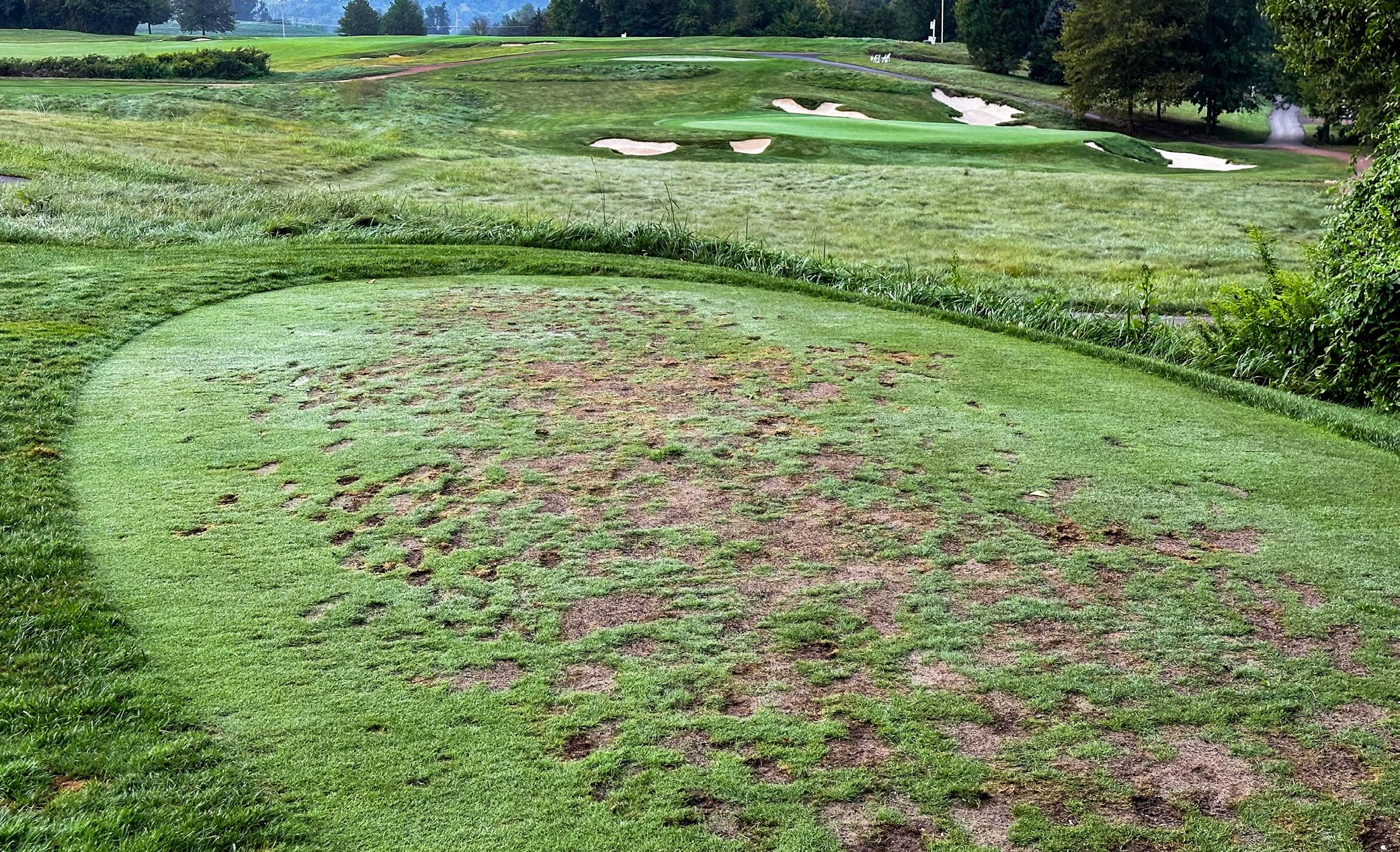
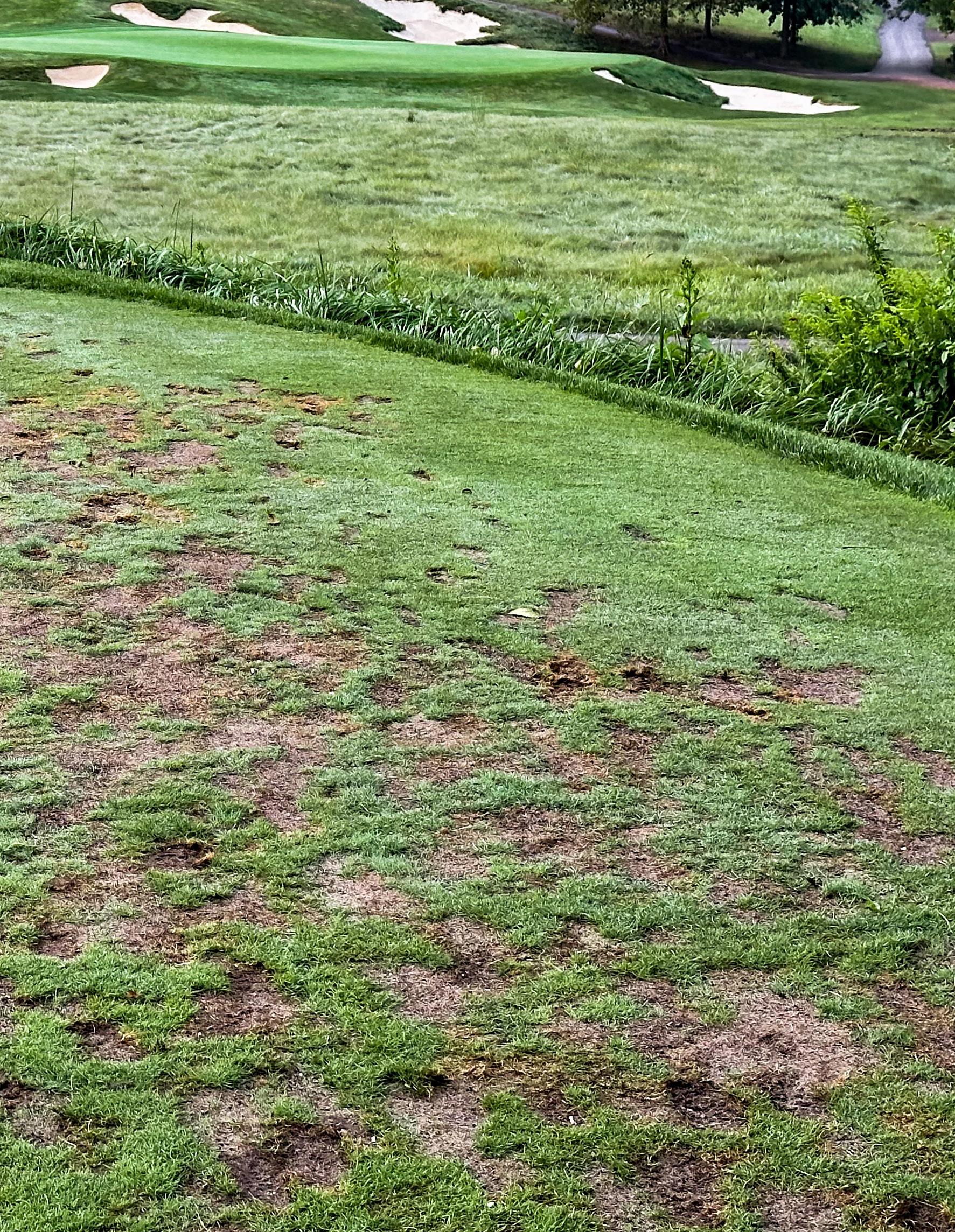
Warm-season grasses, on the other hand, are not typically grown from seed. They are usually established with sprigs or sod. This is why you won’t see seed in the divot mix on a course with bermudagrass or zoysiagrass tees or fairways, the sand is just there to help level the surface and provide a medium for the grass to fill in.
Temperature matters when it comes to divot recovery. Seeds will not germinate when it’s too cold, and grass won’t fill in from stems when it’s not growing well. The growth of almost any grass slows down in winter, but many cool-season grasses also slow down during the summer. Summer is prime golf season in many cooler areas, but the grasses used for fairways and tees on these courses get stressed when it’s hot and humid. Divot recovery will often slow down right as play is peaking, which is not a great combination. This is why many courses with cool-season grasses end the summer with landing areas and tees that are chewed up with divots. These grasses need the cooler weather of late summer and early fall to really start healing.
Meanwhile, if you have warm-season grasses summer divot recovery shouldn’t be much of a problem. However, many courses with these grasses are also busy during the shoulder seasons and winter when growth slows or stops completely. In this situation, divots will keep accumulating with little or no recovery until late spring or early summer. That means divots taken in December might still be there in May!

In places where grass grows well, divots heal faster. This sounds fairly obvious, but growing environments are often an overlooked factor in divot recovery. Divots in shaded areas, wet areas, or areas with poor irrigation coverage will struggle to heal no matter what type of grass is present. Traffic also plays a role. Lots of traffic will slow down divot recovery because new stems or seedlings are repeatedly trampled. This issue is especially noticeable on small tees or other areas where traffic is concentrated.
The first step is asking the golf shop staff how the course wants divots repaired. Some want you to replace divots as much as possible, others prefer you use mix rather than trying to replace the turf. Some have divot mix with seed that they want used on fairways and tees but not in the rough. Once you know the policy, make sure you have divot mix with you and do your best to properly repair your divots and a few more. Try to avoid taking divots on practice swings and resist the temptation to use the course as a practice facility. You may want to drop a few extra balls to work on a tough shot, but it doesn’t take many golfers doing this to greatly increase the number of divots. Please keep your practice sessions at the practice area.
Even when golfers and the maintenance team do all they can, there are going to be times of the year when lots of play and imperfect weather keep divots around longer than anyone would like. If you have questions or concerns about divot recovery, ask the superintendent. You’ll discover that watching grass grow is more interesting than you might think!
Click Here for more from the USGA Green Section Record ‒including the latest articles and videos on sustainable management practices that produce better playing conditions for better golf. USGA

The Idaho Golf Association and WA Golf’s Ladies Golf & Wine Getaway is a member benefit for IGA, WA Golf and OGA members and is restricted to players who hold a handicap in one of the above associations.
Each registrant will be added to a pending list and will be manually moved to a confirmed list. There are 14 king bed rooms and 14 double bed rooms available on a first-come, first-served basis.
REGISTRATION FEES:
• One Golfer (Alone or with one other Non-Golfer) = $900
• Two Golfers sharing a Room = $715/player (total due at registration = $1,430)
WHATS INCLUDED?
• Two nights lodging at Marcus Whitman (Check-in Thursday, August 8th, 2024; Check-out Saturday, August 10th, 2024)
• Two rounds of golf at Wine Valley (Thursday & Saturday)
• Resort Fees
• Tee prize
• Competition fees for both rounds of golf
• Closest to the Pin Prizes & Long Drive for Thursday and Saturday
• Transportation to and from wineries on Friday
• Wine tasting fees at Dunham Cellars, Woodward Canyon & L’Ecole 41 Winery
• Boxed lunch on Friday
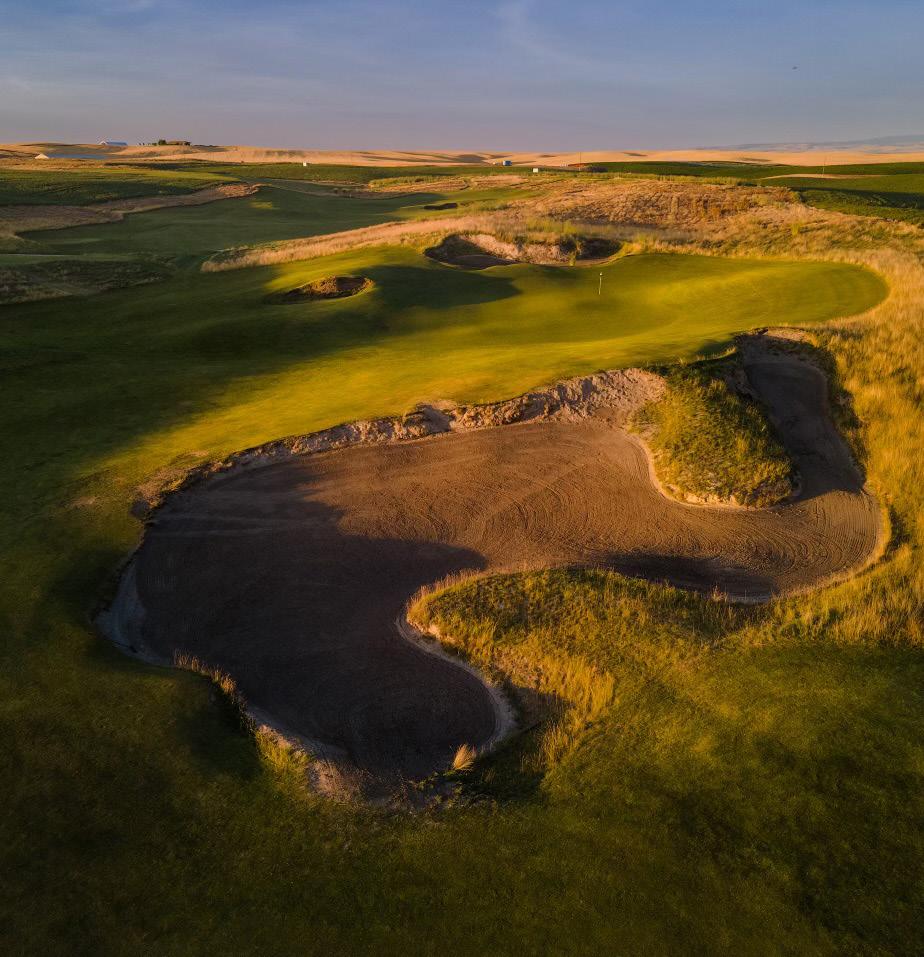
SCHEDULE OF EVENTS:
Thursday, August 8th
Round 1 @ Wine Valley Golf Course - 2:30 pm shotgun
Check-in at The Marcus Whitman Hotel after round 1
Friday, August 9th
Charter bus pick up at hotel for wine tasting – 10:30 am
First stop: Dunham Cellars + box lunch (provided) 11:00 am -1:30 pm
Second stop: Woodward Canyon & L’Ecole 41 Winery (half of the group will go to one winery and the other half will go to the other winery. Then we will switch after an hour.) 2:00 pm – 4:00 pm
Saturday, August 10th
Check-out of hotel room at Marcus Whitman Hotel
Round 2 @ Wine Valley Golf Course –Tee times start at 11 am (10-minute intervals)
EXTRA NIGHTS STAY:
Should be booked directly with the hotel.
REGISTRATION DEADLINE:
Tuesday, July 15th - 3:00 p.m. MST
CONTACT INFORMATION:
Lexie VanAntwerp: Manager of Member Services(208) 342-4442 - lexie@idahoga.org

BY TY SPARING MSGA Communications Coordinator
Have you ever wished there was a competition that combined golf and rodeo skills? Well look no further than the Bucky Bramlette and Rooster Reynolds Memorial Rope and Stroke event that took place in late June at the Beaverhead Golf Course and the Riverbend Arena in Dillon.
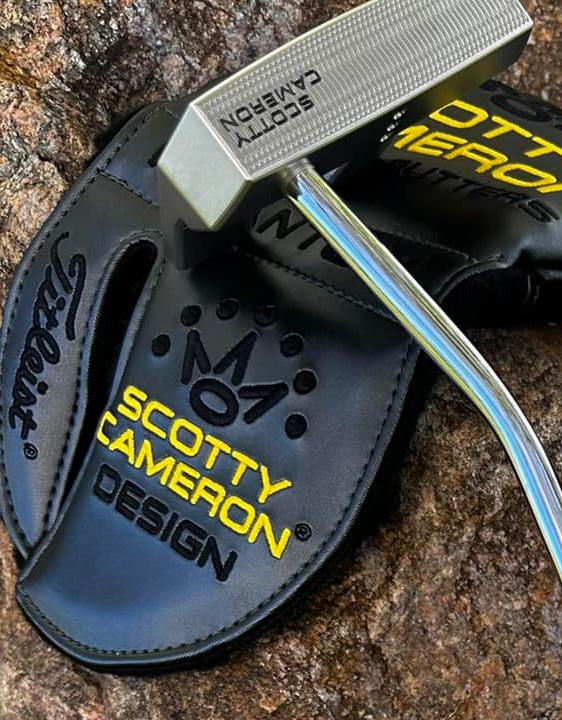
Over the course of two days about 100 Montana cowboy golfers played a round of golf before moving on to the team roping competitions. Winners of the golf event received putters, the team roping event received Yeti coolers, and the overall winners of the Rope and Stroke event won some nice looking Jesse Jaymes Silversmith belt buckles.
Congrats to the overall winners Paul Peterson, Josh Boka and Zach McRae!
